#bless videos without filters
Explore tagged Tumblr posts
Text
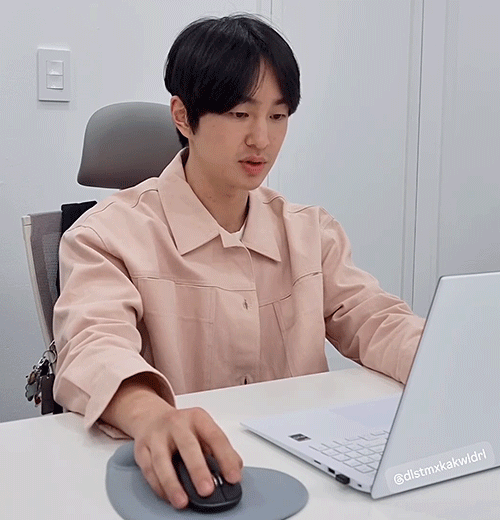
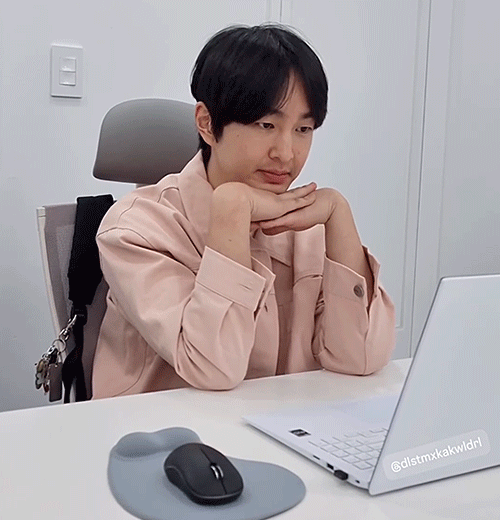
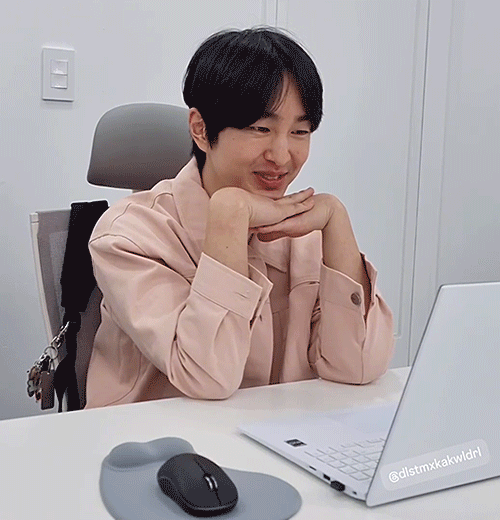
✨💻🐰🎫🩷
129 notes
·
View notes
Text
ok so if anyone wants them, here are some buddie fics that have mutual masturbation and/or phone sex in them (don't look at me), idk these are probably pretty well known but i'm still making my way through all of them. they are all complete and they're all rated E because well. also CHECK THE TAGS because i didn't write them all out here!
Your place is where I'd rather be instead by mickeysmyheart/ @mickeysmyheart (3.5k)
The next thing Eddie does, short circuits Buck's brain. Eddie takes his shirt by the bottom and pulls it up and over his head, keeping it bunched up and putting it to the side on the counter. Eddie is now shirtless. He’s shirtless in his kitchen. Oh. OR Buck teaches Eddie how to make lasagna over FaceTime when Eddie gets his shirt dirty and has to take it off and it alters Buck's brain chemistry.
Last night, you called on accident by mickeysmyheart/ @mickeysmyheart (8.3k)
Buck goes back to his bag and pulls out Eddie’s black tank top. He brings it up to his nose and inhales— he can tell himself it means nothing later. He moans on his exhale. Holy fuck. OR The one where Buck finds one of Eddie's tank tops in their locker and takes it home & in El Paso, Eddie brought one of Buck's LAFD shirts with him. You know the GIF.
Kiss me through the phone by mickeysmyheart/ @mickeysmyheart (2.6k)
Buck finds himself sitting up in bed— his back against his pillows— phone close to his ear. His heart is beating like crazy— both of theirs are. “That something you want, Eddie?” Buck says in a low, deep voice. “Want me to tell you how often I’ve thought about getting down on my knees for you?” Eddie’s breath hitches. That’s all it took for Eddie’s dick to get hard as fuck— twitching with the need to be touched. “Jesus, Buck,” Eddie moans out as he reaches his free hand into his briefs, touching himself. OR Buck is bored and Eddie can't sleep so the two end up having phone/video sex
to have and to hold (platonically and heterosexually) by teenytinytomlinson/ @littlefreakbuckley (21.2k)
So in the middle of Eddie’s dining room, with his brain to mouth filter non-existent (as per usual), Buck blurts out, “Marry me.” Eddie sits straight up, looking at him with eyes wide as saucers. “Excuse me?” “W-well, just think about it. If we get married I can add you and Chris to my insurance policy and that solves your problem.” Eddie’s mouth forms a perfect little ‘o’. Buck waits patiently for the floor to open up and swallow him whole. When the ground doesn’t do as he’d hoped he realizes he has to say something else. “Obviously, w-we don’t have to,” he’s quick to assure. “But if we did it would be platonic, of course, because you’re straight and–” he pauses, praying for another rogue stroke of lightning. Anything to put him out of his misery right now. “-and like I know that I’m bi now, but this wouldn’t be like that y’know? It would just be two friends helping each other out.” He’s rambling, the words won’t stop tumbling out. “Like a friends with benefits type situation! E-except you know not those kinds of benefits! Like actual benefits! Health and dental.” or, Eddie is moving to Texas, losing his insurance, and marrying Buck all very heterosexually and platonically.
A Phone Call Away by Ironkissedfanfics/ @ironkissedmage (5.7k)
Buck had his apartment to himself for the first time in months, so of course he had to take advantage of such a lovely opportunity to get off without fear of anyone hearing him. It's just his luck that he butt dials someone while he's fingers deep in himself. And he's just not sure if it's a blessing or a curse that it's Eddie he called.
while i think of you by markofalover/ @markofalover (4.2k)
Just Buck speaking, apparently, is enough to get him hard. His brain starts hurting. Like he’s guzzled down a Big Gulp sized Icee in the summertime. …or, Eddie slowly loses his mind and has phone sex about it.
anyway those are some of the best ones, please tag me if you guys know of more like this! and thank you to all these authors, you are truly doing the lord's work
#911#911 spoilers#i'm tagging it spoilers bc i honestly forgot if there are any in any of these fics#buck buckley#eddie diaz#buddie#buddie fic#buddie fic rec
205 notes
·
View notes
Text
You Can’t Just Rename Somebody Else’s Pet????
(page 1684-1706)
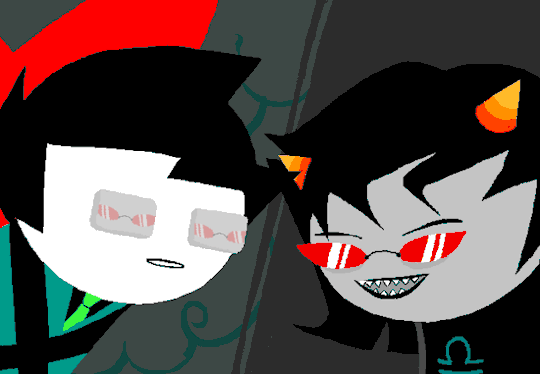
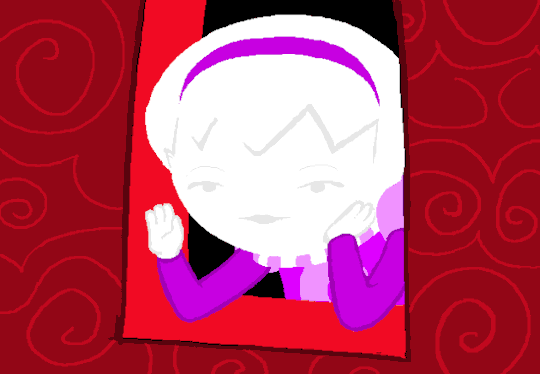
A lot going on in these pages, including kids meeting in person, possible(?) information on how Sburb gates work, Dave’s dream self, and Rose’s surprising interest in a pro basketball player.
First, there’s a Pesterlog between John and gallowsCalibrator, where after she quite literally got him killed she’s only ‘kind of giving [him] the creeps!’ (p.1684). And then he enters the second gate (or, what GC calls the second gate) on her instructions, despite how disastrously things went the last time he accepted her help. I think John believes in forgiveness and second chances – he must do, to have been friends with Dave so long. He also doesn’t wish actual harm on anyone he actively knows, nothing worse than a prank, so it’s hard for him to imagine other people having that mindset, which also explains how Dave later tricks him into giving him the captcha code for Rose’s journals. Finally, while John springs into action in immediately life-threatening situations, he might not have much regard for his life in the abstract given his general disconnect from it. This version of John didn’t experience going into the denizen’s palace and being slaughtered – so it feels more like a video game threat than an actual threat.

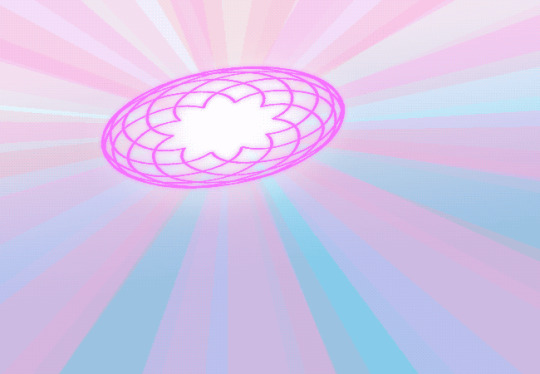
Google LOWAS is a fun new interactive feature and something we haven’t seen before: it tells us absolutely nothing new about the world, but does give a different and cool perspective. Parts of it look exactly like a fungus under a microscope, it’s got the same soft fluffy ridges that fan out like branches, although that could be the effect of a filter or Photoshop effect on an actual landmass. The Gate 2 flash animation fakeout is less successful, partly because I’m blessed and haven’t experienced the ‘waiting game’ where server overload makes it take forever for a flash to load, and partly because the lack of ‘[S]’ and the current update pace makes this unlikely to be a flash anyway,
I really like how John’s gone from being incredibly homestuck to being the biggest trailblazer of all the kids, and the one who’s going to the most places. He’s got a rocketpack and has explored all around LOWAS, he’s now hitting up LOLAR, and pretty soon he’ll be on his way to the Veil. I think that’s another reason he trusted GC again: he wants to try things out and to explore after a lifetime of restrictions. She’s giving him the tools to do that, and even though he’s hesitant to trust her specifically, the concept is irresistible.
KIDS PHYSICALLY IN THE SAME PLACE TIMELINE: John and Jade p.1049, Rose and John p.1690, Dave and Rose p.1704
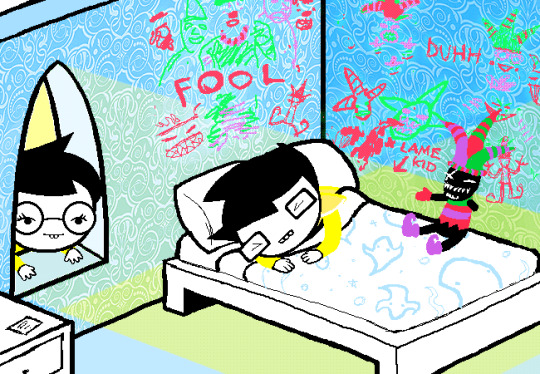
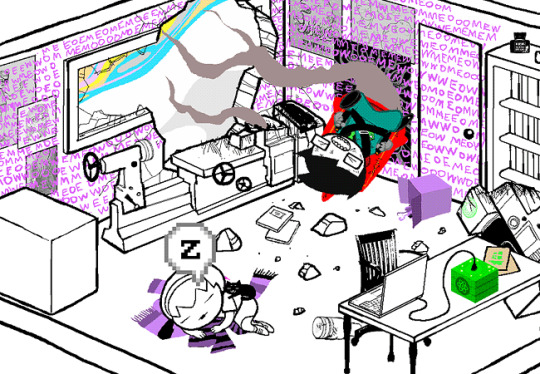
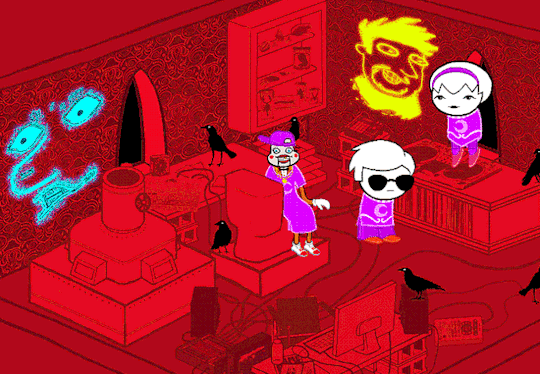
But what a scary situation to suddenly be thrust into a possible in-person social encounter with an online friend you never really expected to meet in person. That’s the sort of thing someone needs days of notice to mentally prepare for (in my experience). That and the total destruction of her walls (and the genetic code; certainly that’ll take some time to reconstruct) explain why he’s so hesitant and uncertain to do anything else in the room, even look at his own gift. Rose pretty much said she was going to knit something for him (p.442) and the tiny glimpse we get here confirms that, but gives no further clues.
John talks to Davesprite, and then asks to talk to ‘the real dave’ (p.1692), which is a fucking slap in the face. Davesprite is arguably the realer Dave, as he’s spent more time being Dave, and current Dave can only exist because of him. It probably sucks to be Davesprite and to see the other version of yourself succeeding and messing around with his friends, after spending four months grieving and suffering and having that go basically unacknowledged. Current Dave claims he ‘wouldn’t give a shit’ (p.1692), but he actually has no way of knowing that without going through Davesprite’s life changing experiences. I guess I’d like to see Davesprite go off and have an arc of his own instead of just being current Dave’s companion, but given how sprites are designed to serve players, I don’t know how likely that is.
TG: the progression of gates is like this whole round robin thing TG: cycling through each planet TG: gate 2 on your planet leads to gate 2 on roses TG: then you build up to gate 3 above her house which leads somewhere else on her planet TG: you look for gate 4 somewhere there TG: which leads to gate 4 above my house (p.1692)
ok so if Davesprite is right here, the progression of gates would look something like this.

which, if true, would mean that John ended up fighting the denizen on Jade’s planet, therefore completing her quest instead of his own. This doesn’t super track to me given how customized the quests and lands seem to be for each player, tying into their titles and domains. Also, Dave went through Gate 5 onto LOHAC (p.1641), his own land, which doesn’t fit the progression. Jade never entering the Medium in the dark timeline means her gates would never appear in the Medium, but there’s no reason to think John’s gates would disappear if he died (but who knows).
A few possible explanations. One, Davesprite is wrong, and for some reason this is information even sprites don’t have. Two, Davesprite is lying, and for some reason Skaia wants to hide this from players or Davesprite is fighting against his sprite programming to conceal this from John. Three, there will be a later reveal surrounding the gates and how they work that’ll make all of this irrelevant anyway. Or, four – I’ve talked about Homestuck becoming less about concrete and predictable mechanics and more about loose concepts and themes as it’s gone on, so, this could be basically unimportant to the story because we’re not actually going to see the kids go through these gates. John is heading to the Veil soon (p.1667) so breaking the expected progression, Jack Noir has glitched the session, and the game is about to go off the rails. The gate system is being used to serve the story right now and allow for some important beats in Rose’s room, but will be irrelevant as the story goal is to hack, change or escape the game, not to follow its rules.
KIDS’ DREAM SELVES REVEALED: 4/4 (+ Bonus[?] Lil Cal)
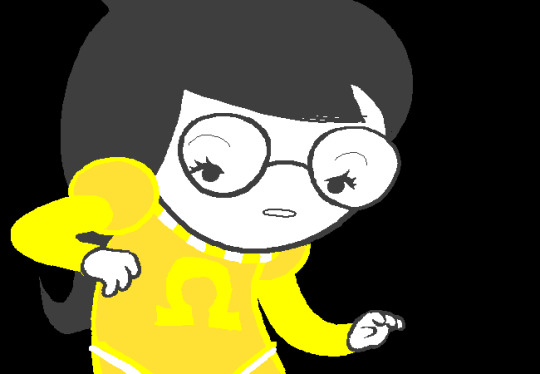
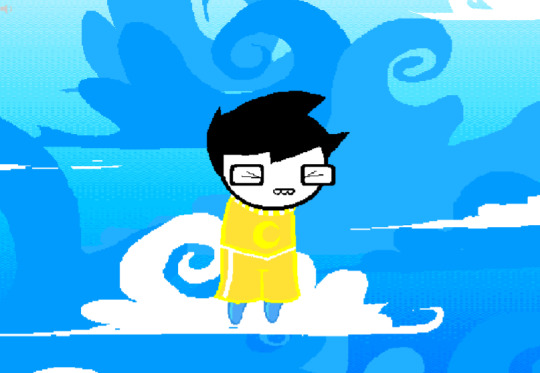

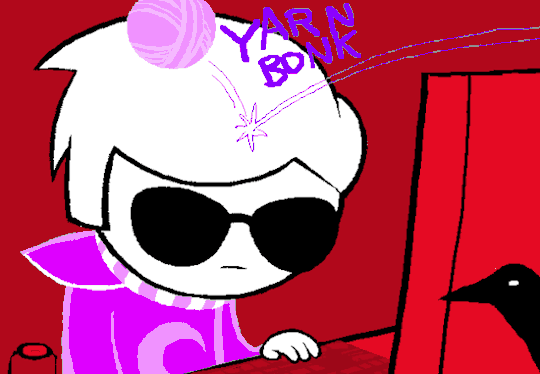
I really like how Rose is drawn in this panel (p.1697), like she’s mid-jump, very fluid and graceful. The bisexual Derse tower in the background is fun too.
Dave’s dream room, on the other hand, is an absolute disaster. All the kids’ rooms feature clutter and accessories from their waking rooms, but not everything from their waking rooms – for example, there’s no sight of the totem lathe in Rose’s dream room (p.1655). Dave’s is a perfect mirror except for the wall decorations, including cruxtruder, toilet, crows, dead things, and trailing wires. Rose would say this mirrors his cluttered and chaotic mind. I think this is connected to Dave already being awake and not knowing it – his mind doesn’t shut down even when he’s asleep, there’s this background noise constantly keeping him agitated and restless, so he can probably get a full eight hours and wake up feeling like he hasn’t slept at all.
Of course he’s drawn Sweet Bro and Hella Jeff on his walls. I’d guess he came up with the idea while his actual world self was asleep, maybe even draws the comics while asleep given that even his dream self is terminally online, and then the ideas return to his waking self because his two selves are connected, he just hasn’t realized until now. Cal’s presence in Dave’s dream room is like an even creepier analog to the Jack Noir harlequin doll in John’s room, but that was an inanimate doll. Cal is moving around and has an actual dream self with a tiny nightgown, which might be confirmation that he’s partially sentient, or is somehow a part of Sburb. It’s also a great explanation for what Dave has previously told us about his dreams.
TG: oh man i wish lil cal wouldnt look at me like that TG: with those dead eyes jesus TG: sometimes i dream that hes real and hes talking to me and i wake up in a cold sweat and basically flip the fuck out (p.419)
KIDS FALLING ASLEEP AT INOPPORTUNE MOMENTS: 4/4 COMPLETE!
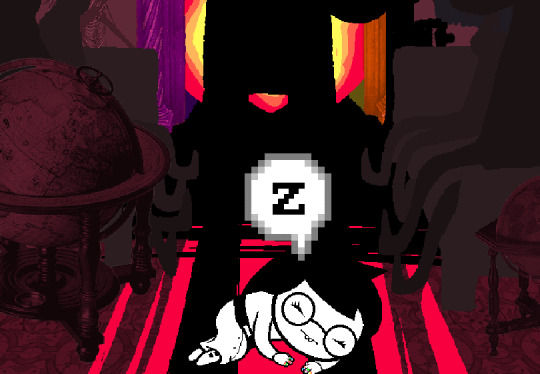
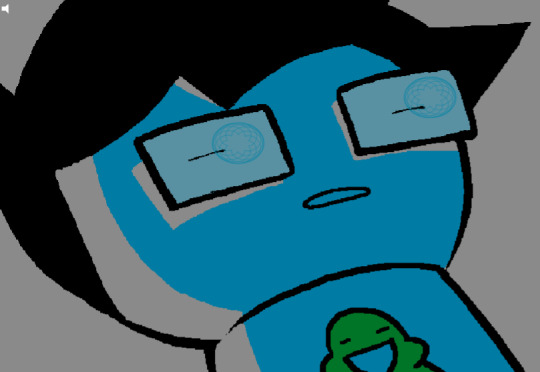
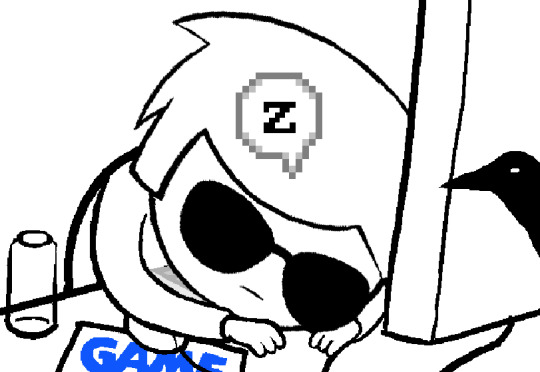
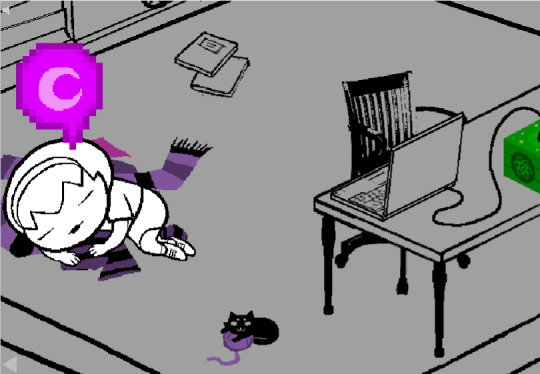
‘"April is the cruelest month, breeding lilacs out of the dead land, mixing memory and desire, stirring dull roots with spring rain." -American sports legend, Charles Barkley’ (p.307)
I gotta say, if there was one part of Homestuck I didn’t expect to be explained in some way, it was these misattributed quotes. Rose thought about this quote (which is originally from T.S. Eliot’s The Waste Land) on her journey to confront her mom downstairs, and now John finds a book of poetry on her shelf written by Charles Barkley, suggesting that in this universe, Rose is not misattributing the quote.
I’m usually more interested in football and baseball so I don’t know this guy at all, but I looked up Charles Barkley and he does seem to have had an impressive career, and an interesting life outside of sports too. He was among the first group of Black students at his elementary school and was openly supportive of a teammate with HIV as early as 1991, as well as speaking out in support of queer communities on lots of occasions. He also broke a bunch of basketball records despite being seen early on as too short and fat to play, appeared in Space Jam, named his daughter after a mall (which I’ve been to), and has written a couple books for real, although none of them are called This Ocean Charles. He has some controversies for sure, but there’s far worse people to reference in a webcomic. Or perhaps two webcomics, as I guess the quote on the front cover implies Barkley is the basketball player featured in Sweet Bro and Hella Jeff #6 and #10.
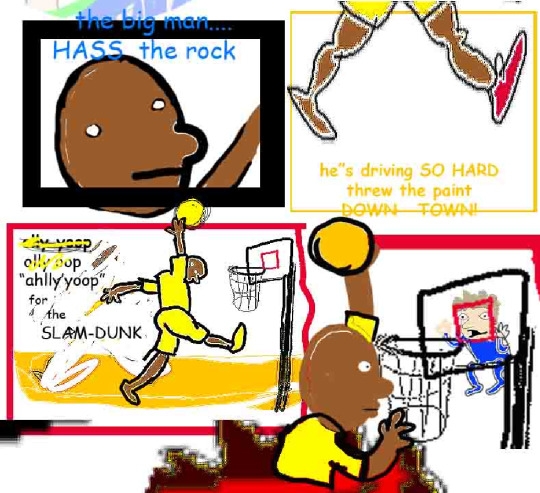
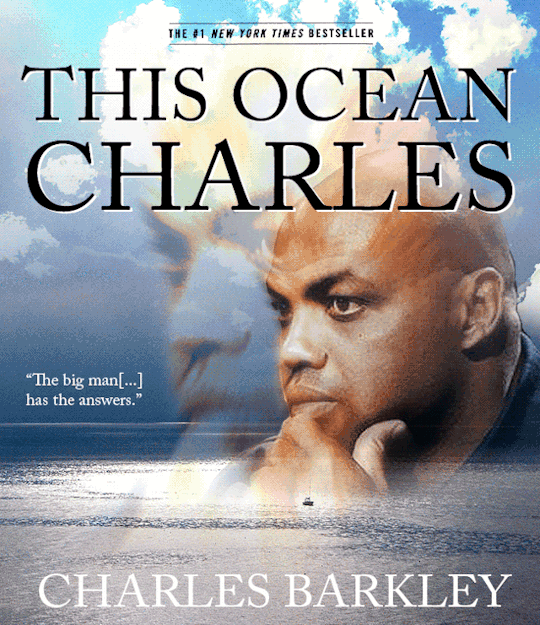
#homestuck#reaction#heyyyy caught up on posts! although tbh there was enough in this section for 2 posts EASY#and i got to register for class for next year which was exciting#this year ive been doing basically straight up english literature which has been fun and an important grounding i think#next year im gonna be doing language/linguistics in art and politics and social media! which im maybe even more excited for#(at my school we just take 1 big class for the year for part time. full time students take 2)#(all kinds of wack compared to my prev school but at least it keeps the deadlines spread out)#chrono
19 notes
·
View notes
Text

I've recently found myself playing through the Syphon Filter games on the original Playstation. I knew about the series beforehand, but I wasn't particularly familiar with them. My experience with the Playstation as a kid was mostly occupied with more family friendly alternatives – often of the animal mascot variety. My mom (bless her) kept an eye on my playing habits and wouldn't even get me Final Fantasy VII because of the gruff guy with a gun for an arm. The most gratuitous violence I ever saw on the machine at the time was probably Bomberman exploding into nothingness. A gruesome way to go for sure, but harmless cartoon shenanigans nonetheless.
It's safe to say that Syphon Filter (1999) is decidedly more violent than anything I ever got my hands on as a tiny toddler child. As secret agent Gabe Logan you get to blow the heads off of terrorists with your handy arsenal of weapons, while pixelated blood splatters all over the place. A true American in other words. I would've been 8 years old at the time, so you can bet your behind that my dear mother would've made sure I never so much as saw a glimpse of Gabe's adventures in our household. But I am an adult now, and she can't stop me anymore even if she tried!
It's a good thing she can't, because Syphon Filter turned out to be exactly the kind of uncompromising I love to see while digging through the Playstation library. As a pioneer among the stealth action genre it carved its own uncertain path and inevitably ended up somewhat rough around the edges. A quality I can appreciate. It has a scrappy, albeit clunky personality that charms me like few modern games can. There's just something special about its relentless difficulty spikes and lack of conveyance that you rarely find in video games these days. It's the kind of game that will drive some players up the metaphorical walls – it certainly got me a few times. The gosh darn Catacombs, man. If you know you know.

I'd like to say that I had a thoroughly good time throughout, but it did take me a little while to really 'get it' so to speak. Syphon Filter demands your full attention and a single mistake is all it takes to be thrown back to a previous checkpoint. It has a nasty habit of spawning enemies behind your back, lots of them require headshots to effectively go down and once your armour is depleted you're pretty much done for. The precision and quick reflexes expected of you can be infuriating, once you've died from the same grenade-throwing enemy ten times in a row you're going to be on the verge of screaming. And I freaking love it.
Having persevered the numerous challenges is such a satisfying accomplishment. The game lingered in my mind, the more I thought about it the more I ended up liking it. By the time I started playing Syphon Filter 2 (2000) I was finally in tune with the developers' sense of brutal, yet rewarding, difficulty. I understood that the game kicking my ass wasn't merely an accident born from limitations and aged design sensibilities – it was the intention. There's a certain rawness to an old game that doesn't pull any punches without being so unfair as to make it impossible to beat. I commend them for believing in the player enough to figure the game out on their own, even if it might drive some to tears.
For those who end up vibing with Syphon Filter though there's a lot of fun to be had. The first three games are filled to the brim with varied locations to explore and interesting scenarios to participate in. The gothic cathedral, the burning subway station and the expo center are all memorable places that will be stuck in my brain for a long time. I often found myself pushing through the challenges to be able to see where the espionage adventure would take me next. There's always something exciting to see around every corner.

When I originally wrote about the first game over on Backloggd I lightly criticised it for its nasty difficulty spikes and conveyance issues. There is admittedly a lot of trial and error in these games, and you often find yourself roaming around unsure what to do. Syphon Filter 3 (2001) on the other hand surprised me with its easier difficulty and willingness to point the player in the right direction. That isn't necessarily a bad development, if anything it shows that the series was moving forward. However, after becoming fairly proficient at the first two's bullshit I couldn't help but feel like something was missing. Don't get me wrong it's still a great game with plenty of challenging sections, but perhaps the first two beat me so hard that I became some kind of weird, involuntary Syphon Filter purist.
Whether that is true or not I do think there is something to be said for the entertainment value of being destroyed by and eventually conquering a really good video game. I've started to play Syphon Filter: Dark Mirror (2006) on the PSP, which obviously has a modern polish that these dinky PS1 games simply lack. It's certainly more playable, but that also means that it has lost some of the immaculate grit that defined the original. It's easy to dismiss an old relic like Syphon Filter based entirely on its harsh indifference to the player, the way it causes us grief in ways that most Sony published games rarely do anymore. But that's also part of its identity, what makes it special and in some sense also fun.
/Alicia
18 notes
·
View notes
Text
"Haven't you ever seen skin like mine?" A vault
Skin clarity + glow | Skin tone | skin clarity



∘₊ ✧───────────────────✧₊∘
⋆.˚ Skin clarity .𖥔˚
My skin is just so clear and beautiful, I can't help staring and feeling it. I am just in awe at how wonderfully blessed I am to be born with such perfect ideal skin. It is so gorgeously smooth, and while its firmness keeps me looking young and perfect, it is still supple and has a slight bounce to the touch.
I mean my skin is so perfect some friends ask me what brand of skin care I use to get my skin so even and glowing like it does, but truth be told.. genetics and positive assumptions about myself I guess😭?? I've never had any reason to use skin products because my skin has always been naturally flawless, and ive never had any reason to doubt myself because literally look at me- i am the proof. That's just my nature. But every now and then, I'll get gifted high-quality skin korean care sets and expensive most wanted skin moisturisers with the most delicious and entising scents by my mum "just in case" but also because the process is fun😋
It's also so fun being able to eat whatever I want without ever having to worry about my skin because nothing could ever affect its perfectness. I just eat what I want, and the after-effects are like a couple of crumbs on my lips and still looking pretty😭
But some people do be jealous tho🙄. "There is no way she can eat what she likes and still look that good" one says and "what about the acne? Has she even gotten a spot once?" another says. And it's even better when I post pictures or videos cus haters really be out here doing there best to convince themselves and everyone around them (like the clowns they are) that skin is impossible to look that perfect and it HAS to be makeup or it HAS to be a filter or she MUST have gotten some surgery of a kind and they all couldn't be more wrong lmao. I just be existing and nothing else and i am just that naturally radiant😂
∘₊ ✧───────────────────✧₊∘
⋆.˚ Skin colour.𖥔˚
I've had people pointing out how dewy and golden like my skin is like all my life and I never even thought about it until now. Well, I kind of always knew that I have the most gorgeous, jaw dropping skin colour that ranged between a deep caramel tan in the light and like a golden brown in the dark; I've been getting remarkable amounts of compliments both in person and on social media about how glorious my skin colour looks. It's kind of overwhelming but ive been fighting though it.
skin colour in the dark | skin colour in bright lightings


∘₊ ✧───────────────────✧₊∘
1 dimple is ♡shaped | I sweat= I shimmer | cutest mole marks

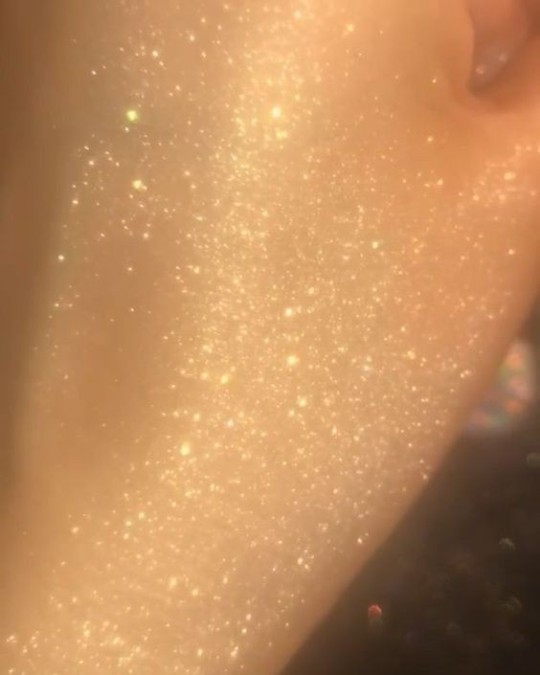
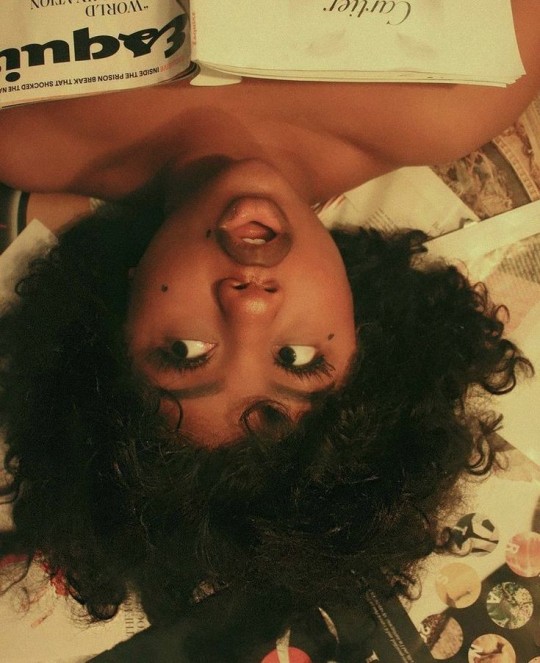
⋆.˚ Unique features.𖥔˚
— Glittery skin when I sweat
I have a rare phenomenon that only 0.0001 in the entire human population have, with my skin where if I am to sweat, my skin will have a light glittery coat. Scientists have recently come to find out that the glittery coat left behind by the sweat is a natural skin protecting barrier. This is incredibly useful for preventing skin problems like rashes, strawberry skin, and uneven skin texture. Scientists have not found a name for this yet (im scientists and don't know what to call it)
— ♡Shaped Dimple
Another rare phenomenon for people to get is dimples. Only 0.01 of the entire human population have dimples, and an even smaller number of people (me) have a heart-shaped dimple. There is nothing scientific about this tho, it's just fun to look at
— Beauty marks / moles
I have a couple of cute beauty marks on my body and face. Also somewhat rare, somewhat not lol. Nothing more to add😊
@theshifterbear @livingmydreamlife5555 @4ellieluv
This was lowkey entertaining to script especially the unique features one too. ONTO THE NEXT!
#loa advice#loassumption#loa tumblr#loa blog#loa#4d reality#law of assumption#master manifestor#desired reality#drself#desired appearance#desired self#desired life#desired face#shiftblr#shifters#shifting#self concept#reality shift#shifted#reality shifting#shifting community#shifting antis dni#law of manifestation
122 notes
·
View notes
Text
Took the weekend to celebrate my birthday. For those of you who care, I went to the playground with my mom, my sister and our babies (they're the same age, birth month twins, we shared a pregnancy) and got lots of sun and fresh air. The playground has an industrial strength adult-sized seesaw and it let's you touch the fucking sky, bless. After lunch at my favorite Chinese buffet that serves the best shrimp I've ever had in my life, we went back home and my best friend was sitting on the porch to surprise me with a case of fancy beer and two new games for the PS5 I got for Christmas 💕 Hollow Knight and Elden Ring, imma tear that shit up whenever I get sick of Fallout. Then my husband's parents came and they gave me $70 and this rad Beetlejuice T-shirt.

It's big too so I can cut it however I want 🥰
After everybody left, husband pulled this scrumptious strawberry krunch ice cream cake out of nowhere and solo'd me the happy birthday song 😊 with feeling.

Then I got dicked down professionally and got to indulge my insomniac tendencies and stay up all night playing video games with the reassurance that he had baby tomorrow, I could sleep in as late as I want. 31 is going to be a fantastic year for me. I have a lot of big things happening.
Now. For the angry mob in my ask box:
Didn't read a word of that. I muted Tumblr the night before my birthday and this morning my wonderful husband filtered through and deleted all the ugly ones for me so I wouldn't even have to skim any of your garbage. I am dearly loved.
Not looking at notifications either. In fact, consider Tumblr notifs off for me forever. Y'all can have my attention when I feel like giving it and only when I feel like giving it. Abusive reblogs will also be blocked and forgotten. Trying to communicate with you imbeciles is like trying to teach trigonometry to toddlers (say that five times fast), so let me spell this out as simply as I can for you single-celled organisms.
• I reblogged one of Spike's posts three times (our one and only conversation) before blocking him
• At this point, I began receiving nonstop anonymous harassment that went on for about 1-2 weeks. I did not retaliate in kind because I don't believe in it. I've been the recipient of anonymous harassment for many years due to my dead dove content. My candid responses are sharp and cruel enough on their own without need of anonymity. The very notion offends my pride. I cannot abide cowardice.
• I did not report Spike. Not once, not for any of it, not even the abusive anons that I fully believe came from him. Why? Because there's no proving it, I'm not going to waste anyone's time on a hunch, and I have gotten so much hate over the years that I don't bother with any of that frill. It's too time-consuming. If I reported everything that offended me, I would never leave this stupid app.
• If I had reported Spike, you can bet your simple ass I would be sitting here gloating and taking credit. He's a shitstain and he deserves bad things. But I didn't! It sure is fucking funny that it happened though, and it's unspeakably flattering that you utter buffoons legitimately believe I'm capable of this, that I even have that kind of power. Have y'all not seen my notes? What kind of numbers do you think I'm pulling? How many people do you think I have under hypnosis? Cause I'm tellin' you right now it's like 2-3 bitches and none of them would ever do anything like that at my behest. It would damage our mutual respect.
Real Rae and anon-answering Rae are two different people. The person I am when I am responding to anonymous harassment is a cold, ruthless cunt with no concern for your thoughts, feelings, or intentions. Once an individual has decided that they're going to hide their identity in order to manipulate me, I shut down and turn to stone. This is a carefully cultivated defense mechanism.
"Don't eat me. I'm toxic."
A simple way to avoid ever interacting with this character I put on is by never leaving anonymous harassment in my askbox. And no, I won't turn off anons for you to make you comfy bc wahh you don't like me and I'm a meanie lmao. Utilize that block button, child. Learn how to enforce boundaries and respect the boundaries of others. Neither Spike nor any of his braindead minions are entitled to my time and attention.
It's incredibly valuable.
Now onto the next order of business: Laura/Afterthefuneral? Who was in my server for a little while before I booted her after she was criminally obnoxious? Who is now buddying up to Spike and intentionally trolling, feeding his paranoia with complete and total fabrications? (I have never even visited Bluesky. I don't even know what the user interface looks like.)
Here's a screenshot of how she really feels about Spike. It's the only thing we ever agreed on:
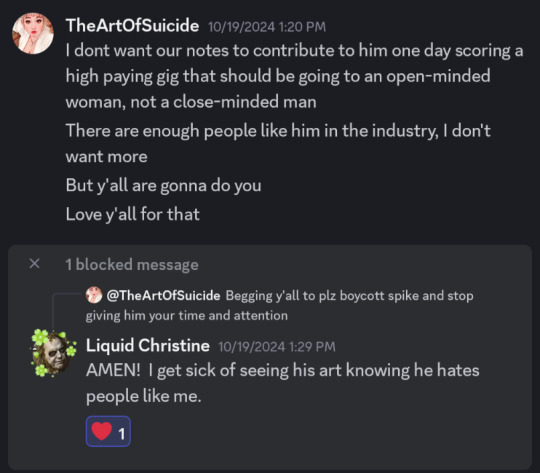
And here's a video of her cussing out her sickly cat, Pumpkin, after he was incapable of consuming the salty processed meat she left out for him:
TW: Animal abuse, disturbing footage
Pumpkin is 20~ years old. Pumpkin has cancer and a whole host of other health issues, several of which clearly stem from neglect.
Laura insists that she is unable to afford treatment/euthanasia/nail trimmings for him despite how often (and it was miserably often) she showed off her newest Beetlejuice-themed swag purchases, price tag and all. Laura believes in supporting small creators, you see. Amazon isn't good enough for her. Anyone who shared space in Dante's with Laura can attest that her treatment of Pumpkin is nothing short of inhumane, and that we were all (with the exception of a special few who tried their best) peace-keeping cowards who never held her accountable in any real way. Pumpkin deserves better.
I never wanted to make this post, Laura, but I will not continue concealing your hideous truths while you perpetuate egregious lies. I wish you had just listened to us the handful of times you were gently encouraged to please ease his visible suffering. Instead, you paraded him. Thinking about him is painful. Thinking about you is repugnant. Thinking about my inaction, and how I had to be pushed this far to get just a drop of justice for that pitiful animal riddles me with guilt. The bitch I was five years ago would have chewed you up and spit you out the first time you posted a picture of his poor, grimacing face and those painfully ingrown claws with the audacity to call it "sexy" (much less endured the months of countless indignifying photoshoots and captions that followed) but these sensitive motherfuckers out here got me caring more about optics than justice ‒ and that's what's really wrong with all of us, ain't it?
Y'all want a confession out of me? This is what I'm guilty of. I ignored Laura's animal abuse because I was afraid that if I pushed it, our mutual friends would be upset with me. Cowardly shit. I'm sorry, Pumpkin. I don't know what I could have done for you, but I didn't do enough and it's selfish of me to use you now as a primary character witness.
I'm going to take some more me time to tend my garden and reflect on the type of person I want to be. It saddens and angers me greatly that I allowed fear of backlash to compromise my rigid moral compass. What was I even afraid of? That's not who I am and I refuse to ever play that role again.
To the nice, harmless folks in my askbox, thank you for the love and I'll be getting back to you...when I know how to gather myself enough to answer all that. For now, I think I want to write nasty beetlebabes. It's been too long.
#personal#long post#vent#tw: animal abuse#i fundamentally object to callout posts#and I dont like that i was forced to write this in self-defense
12 notes
·
View notes
Text
Be Kind, Please Rewind
Robin x trans-fem!reader
Summary: You want to confess your feelings to Robin by slipping a love note in the return case of your favorite movie, but Steve is the one to open it. Panic shoots through you when you make eye contact, but when he winks and pesters Robin to check the movie in, you know the universe blessed you with a wingman.
-> AO3 <-

Taking your weekly trip to Family Video was one you always looked forward to, especially after a stressful school day. The obnoxious chatter and ringing became a thing of the past when entering the quiet video rental store, save for the occasional bustle during their busier hours. You also had the opportunity to see Robin after school, which wasn't exactly your main reason for visiting, you liked to rent your favorite movie every week, but it wasn't not a bonus.
Because only going to Family Video to see your crush was what stalkers do, and you're not a stalker, it just so happens she works at the only movie rental place close to your home. And admitting that aloud to explain it felt awkward.
Mega awkward.
That was something you knew Robin understood. You two would babble on about how difficult it is to be socially awkward on top of wielding a runaway mouth before your brain had a chance to catch its breath and catch up. You over shared, was overly energetic about your random spouts of insight, and the list goes on for as long as you could without a filter. It was comforting to have a fellow rambler in your corner, as your other friends were either more filtered or born for social situations. Having those friends around relaxed you, assured you that you weren't annoying or monopolizing conversations.
But not having moral support the day you impulsively decide to confess your admiration to Robin definitely sucked.
You agonized over what the most painless, less awkward way of confessing was for a week until you decided on writing a note. A short note you could tuck inside the case for Robin to see without you having to go through the audible train wreck of confessing. Admittedly, it took you a few hours to narrow down what to say on that intimidating piece of folded paper, but you cheered to yourself when you finished it.
With that reassurance in mind, you clutched the movie tight as you entered Family Video. It was like your good luck charm from the amount of times you carried it around, wishing upon the VHS tape for good measure. When you saw Steve manning the counter instead of the blonde, you grew apprehensive about returning the movie a day early. He offered a smile in greeting, adjusting his weight to direct his attention to you. Once you stood in front of him, you could see Robin crouched behind him quietly talking to the pile of cases on the floor.
“Welcome back.” Steve said as he leaned against the counter. “Ready for a renewal?”
“Not today.” You chuckle. “I’ll be back next week for it.”
“We got some new movies to keep you busy in the meantime.” Steve grinned, pointing towards the section on the front wall. “You might find a new favorite.”
“Doubt.” You laugh, deciding to place the movie on the counter and head towards the wall of new arrivals.
It was an awkward way to close the conversation, but Steve was used to a certain someone doing the same thing. You were just worried about what he would do when he opened the case and saw the note. Once you stood in front of the wall, you dared to peek behind you. Steve was busy pulling up your information on the computer, but of course the moment you looked he finished clicking into the system and opened the movie case. Warmth painted your cheeks when Steve grinned and met your eyes, offering a wink before closing the case.
“Hey, will you check this movie in for me?” Steve sweetly inquired, hearing an inaudible groan of reluctance. “I won’t ask for the rest of the shift, you can organize to your heart’s content after.”
Satisfied with the compromise, Robin pulled herself to her feet and reluctantly picked the movie up. When she saw the title, she smiled and immediately looked around. Blue eyes locked with yours after a moment, eliciting a wide smile and wave from the blonde. Her reluctance to check the movie in had faded, but you looked away when she found the note.
And you looked back out of nervousness.
Her cheeks were the first to paint red after reading the note, warmth spreading to her ears and covering her face as she shyly hid her face behind the paper. She quietly squealed to herself as she turned to Steve, who encouraged her with a grin.
You turn back around and absently run your eyes across the new arrivals again, feeling your heart flutter like a clock ticking down the seconds. As she inhaled, a trembling exhale answered yours as she approached.
“Hey, so uh..” Robin began nervously, bracing yourself for the gentle let down your anxiety was certain would happen. Her blush deepened her cheeks, imagining how hot to the touch they were. “I’m really, really bad at this stuff, but a movie date would be really, really cool. What do you wanna watch? I’m up for anything, I don’t care if I’ve already seen it.”
“I’ve watched (fav. movie) enough times to last three lifetimes.” You chuckle, tilting your head coyly. “Let’s watch your favorite movie.”
Robin’s posture straightened as she grinned, leaning her body to prompt you to follow her. You oblige with a smile, trailing behind her excited steps. She pulled Doctor Zhivago from the shelf and presented it to you like a prized possession.
“It’s about doomed love.” Robin informed as if entranced, shyly smiling and tilting her head in thought. “Kinda like how being gay and finding love is like.”
“Dark, but I like it.” You approve with a nod, an awkward silence meshing between you two. Your anxiety screamed at you to ask that dreaded question, wanting to ensure that Robin was honest. “I do have another question though.”
“Mm?” Robin prompted, lifting her chin in encouragement.
“Are you..Is it okay that I’m trans?” You stumbled. “That I’m not a ‘real’ girl?”
“You are to me.” Robin sweetly assured, taking your hand and lacing your fingers together. “You look like a girl. You talk like one. You kick ass like one! You’re more than your body to me.”
Blushing, you returned the smile, squeezing her hand.
“Thank you, Robbie.” You hum, allowing the nickname to slip as she smiled. “Soo…Friday at 6?”
“At your domain, as your invitation suggested.” Robin affirmed, swaying cutely before you reluctantly released each other's hands when customers entered. Turning back to you with a smile, raised her shoulders in delight. “See you then.”
“See you Friday.” You echo like a giddy schoolgirl, offering an affectionate eye roll to Steve’s cheesy double thumbs up. “Aren’t you supposed to be working?”
“I am, obviously.” He teased before he and Robin double teamed the stack of movies returned to them.
You exit the movie rental store and mount your bike, your heart beating out of your chest as you ventured down the street towards your home. The sky seemed more blue than it did when you entered Family Video, the clouds soft as they waded across the azure sea above. Friday night couldn’t come soon enough, and counting down from Monday felt like an eternity. It gave you the entire week to prepare yourself for the awkward mess you two would be, but it also gave you something sweet to work towards. You giggle at the thought of all the possibilities that waited for you, all thanks to Steve improvising as a wingman.
I’ll have to be his wings one day. You smile to yourself, lost in a daydream as you made your way home.
#robin buckley#robin buckley imagine#robin buckley x female reader#robin buckley x fem!reader#robin buckley x you#robin buckley fluff#robin buckley x transfem!reader#this sat in my drafts for two years...it's time for this birdie to fly
14 notes
·
View notes
Note
The Rodrigues Ladies just dropped their first single and music video and I’m not brave enough to watch it with the volume on
I forgot all about that lmao. I just watched like 30 seconds and I think that's all I can do at a time without secondhand embarrassment breaks. The filters, the poses, the lip synching, the prominence of Jill's' voice over the others.......it's s just as bad as you'd assume it is. It looks like something they show in a documentary about cult survivors to show how crazy and brainwashed that used to be.
Here's the video for anyone else who wants to be Blessed by the Rodrigues girls in their matching temu outfits:
youtube
#and i don't say temu to make fun of cheap clothes i just don't know what tf else you would find these weird anime nurse outfits#the rodrigues family#fundie youtube
13 notes
·
View notes
Text
🦇🎬 [VAMPSTAGRAM POST – @astarion.spawn] 📹 [Video – 17 seconds. Vertical format. “Lunar Nervous Breakdown” filter]
🎥 Content: Astarion is perched on one of the Crimson Palace battlements, left shoulder fully exposed, blood-red stage cloak slipping off with rehearsed nonchalance, revealing his collarbone as well. The moonlight sensually highlights the line of his neck and trapezius with the intensity of post-breakup theatrical lighting. His lashes tremble. His eyes gaze into the distance. Where to? No one knows. Perhaps Cazador’s ritual slippers. Perhaps a future without sequins.
🩸 On-screen text (in gothic-italic font):
“Being Blooderella isn’t just tulle. It’s trauma. It’s glitter. It’s serving drama with open wounds. And no paycheck.”
🗣️ In the background (offscreen, but clearly Cazador):
“No. NO. Not like that. You’re pouting, not suffering. Straighten your back, extend the clavicle! Do you want to be Blooderella or a hunchbacked, underfed ghoul in eyeliner?”
🎵 Music: A single screech of an out-of-tune violin bow. Possibly played by an underpaid werewolf with early-onset Parkinson’s.
Caption by Astarion: I gave the moon my best angle. I gave the audience my most broken and delicate sigh.
All I got was yet another monologue from Father Fabulous.
#BlooderellaIsTired #SpawnInTulle #CazadorIsTheVillain #FreeMyClavicle #AndMyNipples
💬 COMMENTS:
@leon_vampnotdandy: The shoulder is weak. The drama is stale. I would’ve done it better. I did, actually. In private. With better lighting. And real tears.
@astarion.spawn (replying to @leon_vampnotdandy): It must be so hard for you, brother—going from golden child to bitter background extra. Still, the lighting suits you. Dim and distant.
@astarion_silk_nips_stan: If I ever see you cry under moonlight in real life, I will combust. Please consider it a formal request.
@cursedcaravaggio: I painted this frame. Then I bled on it. Then I set it on fire in your honor. Iconic. 🔥🖼️🩸
@minthara_darkness4life: Weakness masquerading as art. Typical spawn behavior. Let me know when he bleeds for something other than aesthetic. 🩸🗡️
@CazadorFanNo1: I’ve replayed only Lord Cazador’s lines from this post 34 times. Cleanse me with criticism, Master. Scold me into excellence. 🙇♂️🔥
@astarion.spawn (replying to @CazadorFanNo1): Darling, if you want to be cleansed by Cazador’s criticism, just try sneezing in his presence. It worked wonders for Yousen. He’s still apologizing. In six languages. @violet.redrum (replying to @CazadorFanNo1): You listened to his voice 34 times? That’s 33 more than I managed without developing a stress rash.
@claviclecult_official We are updating the shrine. New screenshot at 0:09. Blessed be the bone structure. 💀📿
@astarion.spawn (replying to @claviclecult_official): Please add a votive candle for the left side. It’s underappreciated. The things I’ve endured to maintain this bone geometry…
@midnight_latte: My blood curdled. My eyeliner smudged in sympathy. This is cinema. This is suffering. This is… unpaid performance art.
@claviclefiend_69: THE CLAVICLE. THE COLLARBONE. THE CAPE. Sir. This is a thirst trap. And I am hopelessly, willingly, eternally trapped.
@sorrowandsatin: This post cured my emotional repression, then gave me new trauma. Can I send you the therapy bill, or should I invoice Father Fabulous directly?
@astarion.spawn (replying to @sorrowandsatin): Send it to the Crimson Palace, attention: “His Excellency, Lord Gaslighter in Chief.” He'll frame it and use it as a coaster.
@karlach_boom: OH MY GOD ASTY WHY ARE YOU SO DRAMATIC I LOVE YOU. You look like a cursed romance novel, begging to be read. At the premiere, I’m bringing popcorn and a sword—I’ve got front-row seats and I’m ready to explode!!! 🔥🍿⚔️
@astarion.spawn (replying to @karlach_boom): You’re the only one I’ll let shout that in public. Also: bring extra popcorn. And a backup sword—just in case.
@bartholoratticus: I stitched that cloak. And those slippers too. Where’s my name in the credits, spawnling? Also, you still owe me buttons. And emotional compensation for that bite.
@tragicbutmakeitugly: Serving drama? You barely serve posture. I’ve seen corpses look more expressive.
@cazador.official (replying to @tragicbutmakeitugly): Indeed. I have seen cadavers with rigor mortis strike a more captivating pose. And they don’t talk back.
@mistressofmelodrama: Cazador says “posture,” I say “poetry.” This man is the tragic opera. This man is the ball. This man is the reason my therapist asks too many questions.
@laezel_fists_of_destiny: This display is weak. Expose your shoulder if you must, but do it while disemboweling an enemy. Also: who allowed the rodent to speak? 🪓🐀
@bloodpressure_queen: The violin screech gave me anxiety. The shoulder gave me life. The background voice gave me PTSD.
@auntie.ethel (verified): Lovely clavicle. I could use it in a stew. 🧙♀️🥣
@CazadorFanNo1: The only real tragedy here? Lord Cazador hasn’t released an audiobook where he just insults people for twelve hours. Take my coin. Take my soul. Take my self-esteem.
@dalyria_theonlysaneone (replying to @CazadorFanNo1): Twelve hours of insults? You do realize… we’re already living inside the audiobook. Also his voice gave my nightmares a complex. @cazador.official (replying to @CazadorFanNo1): An audiobook? How delightfully... modern. Perhaps next you’ll ask me to launch a podcast called “Blood & Burned Hopes”, where I berate lesser beings weekly for the crime of existing without a spine. Tempting. But why waste my breath when I can simply glare and make them cry? Still, your offer is noted. Send your coin. Send your soul. Keep your self-esteem—I wouldn’t know what to do with such a flimsy object. @CazadorFanNo1 (replying to @cazador.official): A podcast? A podcast?! Oh Master, even the idea makes my ears bleed with joy. “Blood & Burned Hopes”? Instant classic. Instant religion. I would tattoo the RSS feed on my neck. I would chant the intro theme as my morning mantra. Please. I beg. I ache. I perish at the thought of being verbally disemboweled by your disdainful syllables. P.S. My coin has been mailed. P.P.S. My soul is in the inbox. P.P.P.S. May I offer my left kneecap too? It’s symmetrical. You deserve nothing less.
@spawnthirstchronicles: Imagine being the moon and getting that angle of Astarion every night??? I'd evaporate from joy. 🌕🔥
@wyll_revengard.official: Are you okay? I mean—obviously not. But… should I come over? Not that I was watching the video on loop or anything. I was… checking lighting references. For the ball. Yes.
@astarion.spawn (replying to @wyll_revengard.official): No. But I look it. And that’s what matters. (Also, yes. Bring the rat snacks.) @wyll_revengard.official (risponde a @astarion.spawn): Also, just saying... you looked radiant. In a ‘my life is crumbling and I’m still beautiful’ kind of way. 🌹 @gale_of_waterdeep (risponde a @wyll_revengard.official): Poetic. And dangerously codependent. Shall I prepare a pamphlet on emotional boundaries in enchanted relationships?
@spawnsyndrome: I paused the video and stared at your collarbone for ten minutes. Then I felt shame. Then I pressed play again.
@wannabloodicon: All clavicle, no content.
@astarion.spawn (risposta a @wannabloodicon): You say that like clavicle isn’t content. Some of us were sculpted by trauma and divine geometry, sweetheart.
@shadowheart.artemis: It’s giving ‘sad high priestess of velvet pain’. Relatable. But next time? Dim the moonlight by 12%. It’s washing out the mood. 💔🕯️🌘
@petras_the_icon: Oh look, a shoulder and a personal tragedy. How original. Next time, just post the clavicle and spare us the rest of you, Bloodragella.
@astarion.spawn (replying to @petras_the_icon): Oh look, it speaks. Tell me, Petras—how does it feel to wake up every night knowing that even my bone structure gets more attention than your entire existence? @petras_the_icon (replying to @astarion.spawn): Not a thing. Unlike you, I don’t need the moon and a full lighting crew to shine. But why stop there? Why just hint at the small, loving corrections of our generous father? Since you love attention so much—let’s give the people all of you.
📎 [NEW POST – @petras_the_icon] 🎬 Leaked Footage: “Blooderella – In the Shadow of the Moon” 🩸 Caption: Exclusive. Unfiltered. Undignified. Here’s what @astarion.spawn cut out and didn’t want you to see. Enjoy the raw talent. 💋 #BlooderellaUnmasked
🎥 [VIDEO CLIP – 43 seconds. Vertical. Starts mid-monologue.] CAZADOR (offscreen): "No. Not like that. You're not suffering. You're... sighing. And sighing isn't tragic. It's... plebeian." "Straighten your back. Show the clavicle. More yearning, less colitis. More tragedy, less constipation." "Astarion, my little waste of space, time, and potential—you are Blooderella. Could you at least pretend to have charisma? "Imagine the prince just ignored you. Your cloak’s wrinkled. I scratched your name from the script and replaced it with… what’s his name again? That..." (pretends to think, visibly disgusted) "...that one. Pe… Pi… Pestrash? You know, the one with the receding chin, the low forehead, the vacant stare, and the hair of a 1950s spinster. The one who cries if his rat bowl isn’t the one with his name on it. You know who I mean." (He sighs. Long. As if carrying the weight of the world and everyone else’s mediocrity.) "You know what I should do, Astarion?" "I should hit you with SLIPPERS. Not nearly enough times, clearly. (Cut to Astarion frozen in silence. Fade out.)
@petras_the_icon: Wait. No. That was about him, not me?! That part wasn’t— It wasn’t supposed to— and I don’t cry while eating! @astarion.spawn (replying to @petras_the_icon): Oh darling, it was about me. Until Daddy decided to change the channel. Looks like your 15 seconds of fame came with a side of Pestrash Realness™. @petras_the_icon (replying to @astarion.spawn): You edited this. You must have— @astarion.spawn (replying to @petras_the_icon): Please. I wouldn’t waste my moonlight or my night magic on editing when you sabotage yourself so beautifully. Next time you plan a public humiliation, try not to star in it. @violet.redrum (replying to @petras_the_icon): This is why I stay quiet and steal everyone’s jewelry. Let me know when you're done crying over bowls and parental disappointment. @leon_vampnotdandy (replying to @petras_the_icon): HE CALLED YOU PE-STRASH. I’M ACTUALLY WHEEZING. That was the most accurate nickname since he named me ‘useless wall decor’. 😭💀 @astarion.spawn (replying to @petras_the_icon): And just like that, the spotlight dimmed… on the wrong spawn. Thank you for the unintentional PR boost, Pestrash. My clavicle and I are eternally grateful.
@Yousen_grimfangs: Laugh all you want, but I’d let Master Cazador misname me every night if he just acknowledged I exist. Meanwhile, Astarion gets whole monologues and verbal beatdowns with adjectives.
@Violet.Redrum: Okay but real talk: the Master forgot all of our names last century. And he said Astarion twice?? TWICE. That’s basically a sonnet in Father’s language.
@leon_vampnotdandy (replying to @Violet.Redrum): Twice. He said his name twice. I had to tattoo 'Leon' on my forehead, and he calls him twice in a single monologue. Should I start crying over the wrong food bowl too? @dalyria_theonlysaneone (replying to @Violet.Redrum): Being remembered by Cazador isn’t an honor, it’s a curse. Brothers, don’t you see? Something dark is at work here!
@aurelia.whispers: I don’t understand why everyone’s complaining. I’m glad I wasn’t mentioned. Less attention, fewer slipper beatings.
@astarion.spawn (replies to all): Oh yes, so blessed. Such an honour to be insulted on repeat and battered with ritual slippers. You’re all welcome to trade places. Just remember to moisturise. Trauma dries the skin terribly.
@violet.redrum: And now that I think about it... he called him Pestrash… but at least he remembered him. I still get confused with “that one with the hair.”
@petras_the_icon (replies to all): HAHAHA. Very funny. Everyone’s laughing at “Pestrash.” But who leaked the viral content, huh? WHO made the views skyrocket, huh? You’re all just jealous because I’m viral and you… you’re just pale.
@dalyria_theonlysaneone (replying to @petras_the_icon): You leaked a video that humiliates you. Even I—who knows, who has seen beyond—can’t stay silent about this. Congrats, Petras. Your ego just ate itself. @leon_vampnotdandy (replying to @petras_the_icon): Pestrash, you idiot, viral isn’t the same as victorious. The plague was viral too.
Since the last poll ended in a tie, lol, the interview with Dalyria is coming soon! The only one who knows! The only smart one! The only one who’s seen beyond the veil of parody! And deeply regretted it! Stay tuned! xD
#astarion#wyll ravengard#cazador szarr#dalyria#pale petras#gale dekarios#bg3 shadowheart#lae'zel bg3#bg3 astarion#minthara#karlach bg3#bg3 yousen#bg3 aurelia#bg3 leon#bg3 violet#baldur's gate 3#bg3#wyll x astarion#wyllstarion#blooderella
5 notes
·
View notes
Text
Sophie's 2024 In Review
I had a weird 2024. Really, the past couple of years have been weird, but my memory is unwilling to contribute very meaningfully to that particular reminiscence, so I’ll focus on 2024, which was, again, weird! Lots of my life in recent time has been spent doing Not Video Game Things, whether it be due to chemo, school, or burnout. I would have liked to play more, write more, do more within the gaming space, but as it stood for most of last year, I was simply not able to. I’m able to get back into the swing of things more now (for the time being), but as a result of my relative lack of Video Game Things done last year, my list of games played was small. And while I do wish I could have played more, this is sort of a blessing in disguise for me, because when I spoke of what I wanted to do, “play more” was not the only thing I had on my bucket list. I wanted to write more, and now I have a neat little list of games I played over a twelve-month period that I can feasibly cover the entirety of (not really accounting for more continuous things like Street Fighter or Overwatch). So, without further ado, here is me talking about most of the stuff I had the pleasure of experiencing in 2024. I wrote reviews for several of these titles (despite the slowness, 2024 is actually the year I started seriously getting into games writing), but this will try to be more casual, and my thoughts are ever-growing. There’s going to be some good, some not-so-good, some… I don’t want to say bad, but… It’s complicated. Let’s begin, shall we?
Hollow Knight
And what a place to begin! In February of 2024 (ironically the time I picked up the controller again this year, I guess January just isn’t my month), I started my year’s list of completions with a game I had heard no shortage of praise for, Hollow Knight. It actually wasn’t my first foray into Hallownest, but my initial attempt at the game (which happened years ago now) saw me wander around for an hour, die to the first challenging enemy I encountered, respawn at the beginning, and promptly quit.
I wouldn’t be so easily filtered the second time around, though. As I am an Inexperienced Game Player, Hollow Knight was actually my first Metroidvania, and I almost instantly saw the appeal. If there is one phrase I could use to describe my time with Hollow Knight, it would be “comfortably lost and enjoyably distracted.” In such a deeply connected and interwoven world as Hallownest, it was easy to find myself straying from the path I had laid out, but I rarely felt as if I was losing track of myself. The game presented so many strong areas for me to explore and was so adept at drawing my attention to different spots on the screen and within the world that any progression I had intended for myself melted away almost instantly. Whatever plans I had within Hollow Knight gave way to winding side roads and impromptu challenges, making for a truly unpredictable experience.
The game certainly has its frictions, with the exploration of a new area always gated by a hunt for the cartographer (at least for me, the uninitiated), the sparseness of the bench-shaped save points, and the countless enemies I could level any number of complaints against. But, for me, this atmosphere of harshness makes each step forward more important. I grew to love the cartographer (whose name I regrettably forget, but I love you, bug guy), I quickly adapted to hunt for benches as one would hunt for water in the desert, and I developed strategies to avoid or dispatch the enemies that posed a challenge towards me. Hollow Knight is a game of growth and understanding as the player becomes part of Hallownest, learning its ins and outs, its nooks and crannies, growing to manage its prickly environment and smooth out the edges. As the Knight gains more tools to navigate the crevices of the dangerous world they inhabit, the player gains those tools and then some. Each hour spent in Hallownest is time spent growing accustomed to its rules, taking them in and bending them where you can. I can’t hate Hollow Knight’s pain points. I grew to love them too much.
Beyond all my communication with the world of Hallownest, beyond each new tunnel I dug for myself, Hollow Knight was simply fun. The lonely atmosphere, the harsh but welcoming environment, and the interconnectivity of Hallownest all kept me playing. But what got me to see all that in the first place is a game that, at face value, is just satisfying to control. Hitting enemies is appropriately chunky, but just as appropriately weak (you are swinging a nail, after all). Jumps are believable without sacrificing their feel, and the abilities are each powerful and satisfying, at appropriate costs. Boss fights are enjoyable to master, and really, the game is just fun to pilot and explore. At the end of the day, I could give any amount of compliments to Hollow Knight’s systems and mechanics for their satisfaction, but I’ll leave it at this: I completed the game (112%!) by accident, and went on to complete four of the game’s five final boss rush pantheons. The fifth was unfortunately Very Bad and Not Fun, but 80% is a proficient grade! Ultimately, Hollow Knight was a very strong start to my year. There are pieces I can nitpick, fights I can whine about, but they’ve faded in my mind. What I remember of my time in Hallownest is a feeling of lostness, not dissimilar to being lost in a forest of opportunity as a small child. I remember a world I grew to love, even if it didn’t love me back. And I remember a game that I would love to play again for the first time. If the goal was to ingratiate me to Metroidvanias, then Team Cherry succeeded. A very strong start to my 2024!
Shin Megami Tensei: Persona
For a decent chunk of the year (and a good bit of time before that), I did not really decide what games I would play next. You see, I have a backlog of games numbering well into the triple digits, and I feared bias and indecision would taint my play order. As such, I let a wheel pick what I would delve into next, and following my very pleasant experience with Hollow Knight, I was ready to keep that ball rolling with another hit. Unfortunately, the wheel had other plans, and as such, I was stuck with Persona. Now, I would like to preface this section with two key pieces of context. Firstly, I not only struggle quite heavily with more aged RPGs, but I don’t even really enjoy them. More power to those that do, but contending with random encounters, incredibly standard turn-based encounters, and very plodding pacing is not my cup of tea (though I can be convinced). Secondly, I was not really interested in the first Persona game whatsoever. Every one of its sequels had hooked me in some way, but the first game was really only part of my backlog due to a friend’s recommendation and a sense of series completion (which is ironic, considering how my experiences with the series have panned out thus far). These factors stacked the deck against Persona before I could even start it, and unfortunately for the game, it couldn’t beat the odds.
That being said, it did do some things I was genuinely pleased with. Dungeon and area traversal is shockingly well-executed, with a neat area map that denotes prior engagement with a tile and labels the rooms relatively clearly. I never felt lost in a Persona dungeon, and while it may be ironic coming off of the praise I gave Hollow Knight for its winding and unkempt area design, this is most certainly a good thing. The first-person perspective was also welcome, allowing me to more easily keep mental track of where I had and hadn’t been. In all, I found Persona quite a refreshing departure from other older RPGs when it came to simply moving around and exploring the game’s spaces, with it being quite easy to retrace my steps or avoid said reprisal. Additionally, those spaces were not wholly toothless! Though the game’s setting generally left me whelmed or worse, it’s not without its atmosphere and the soundtrack combined with a general eeriness did leave me in a strong mood, if nothing else.
Alas, that is where my praise mostly ends. That’s not to say that I hated everything else I encountered in Persona, but my feelings towards the setting can mostly be extended to the entirety of my experience with the game itself. It left me whelmed, or worse. This can be most crucially seen within the story, the aspect that I personally find myself most attached to whenever I play an RPG. Now, to be clear, Persona’s story is not… Awful. But I can only really describe it as a very cardboard experience, one which didn’t hold my interest for long whatsoever. It’s not without its intrigue, but its characters are very flat (hence the term ‘cardboard’), its plot, while it has some genuinely interesting mystery, is bogged down by a great deal of meandering (which on its own is not horrible, but when you are meandering with a group of wholly uninteresting high schoolers, it’s a struggle to care about), and its setting, though it may be the strongest part of the game’s narrative, just could not do enough to keep me invested. None of these on their own are dealbreakers, but in conjunction with one another, they led to my experience with Persona being one of complete disinterest.
And the gameplay is even worse! While I’ve given the dungeon traversal its dues, the rest of my experience playing Persona was boring at best and actively frustrating at worst, due to a mix of classic tropes of older RPGs and a variety of new problems. I will say, Persona utilizes a grid system within battle that leads to weapon choices and party placement on the game board being genuinely interesting, but when there are no interesting encounters to be had within this system, the novelty wears thin quite quickly. Furthermore, these encounters with uninteresting enemies happen too frequently and inconveniently to just ignore, as a result of the game’s liberal use of random encounters. Battles took up a great deal of my time with Persona, and I never really had any fun or memorable experiences within them.
What’s worse, or rather more disappointing, is the system you obtain fusion cards with. Fusion cards are what allow you to summon new Personas, and they’re collected by negotiating with the monsters you battle. The negotiation options are fairly robust, but where the problems arise is in applying those options to the monsters you negotiate with. There is no real rhyme or reason to which negotiation options provide positive results or negative ones, and there is no secret to divining them from the enemies’ designs or names. Persona is a game you have to play alongside a wiki, and while there are games that make this work, in this one, it dragged me out of the experience and made me feel much less in control of each situation. The overworld layout is frustrating to navigate among a sea of random encounters and confusing orientation, the combat is uninteresting to engage with due to a lack of interesting enemies, and the negotiation system, while interesting, is obtuse to extrapolate the details of and ultimately requires outside help to utilize to its fullest potential. Persona certainly has the bones of a captivating experience, but it does little enough with them that I couldn’t find myself getting excited for any of it.
And maybe the game ends up, by its conclusion, growing to surpass the sum of its parts. But after 16 hours, it had failed to pull me in in any meaningful way, and I decided to simply stop. I felt bad, as I really do try my best to give games the benefit of the doubt and finish what I start, but not a single neuron in my brain was firing while I played Persona. It’s unfortunate, but it’s a game that I will not remember for its notable strengths, but rather its notable weaknesses. I really tried with Persona, but I had to let my time with it lapse. It just didn’t do enough, and left me hungry for a game with some real meat to its narrative, its systems, and its vibes.
Pyre
Luckily for me, the next game on the docket was Pyre, and spoiler alert: This is within my top 3 games of all time. I’m not much for ranking the things I play, but Pyre blew me away, and each time I think about it, I get a sorrowful, nostalgic, and churning feeling deep within. It’s a feeling I rarely get, and one I do my best to cherish. Pyre has this indescribable pull on my emotions, and each of those attributes I found lacking within Persona could be found in abundance within Pyre. It is a game I find to be truly special, a success on each and every level I can look at it from. Forgive the possible hyperbole, but I think it is a masterpiece, and I find little flaw in its approaches to attachment, choice, and meaningful responses to player action. Pyre is a game that, at its core, understands the power of its medium and uses it in simultaneously gut-wrenching and heartwarming ways. I can’t express in words how much it truly means to me, so I will do all I can to instead express why it means so much to me. Pyre blew me away, and made me feel more involved than most other games have been able to, with the effects of such an immersion reverberating throughout my playthrough, and at times, my life.
While Pyre certainly succeeds at many things, two stand out to me in particular: The game’s ability to connect you with the characters and events within the game, and to use those connections to slam your emotions to the pavement as the game progresses. I won’t lie and say I was hooked on the game or its characters immediately, but I was certainly intrigued enough by its premise (exiles of a broken Commonwealth being united by a Reader and forced to participate in oddly handball-shaped Rites in order to earn their freedom) to see it through, and I am so, so glad I did. Pyre is a truly character-driven story, building upon a trio of lovable but imperfect (except for Hedwyn, he is divine) wagonmates until you have amassed an entire league of people, each with their own histories that have meaningful impacts upon gameplay. For example, Jodariel, a hardened veteran, is at first unwilling to trust Pamitha, a harp who Jodariel would have faced in combat long before either of them were exiled. As a result, the two cannot be paired together within the Rites until their conflict has been resolved, and when said resolution does take place, it feels all the more powerful as the feud’s impact has stretched beyond the boundaries of a text box. Little details like this, alongside each character’s charming quirks, gameplay impact, and personal backstories, all lend a sense of true dimension to the party you find yourself leading through the Downside, the realm of exile that the party finds themselves within.
But as I said, these bonds are not confined to a simple rectangle at the bottom of your screen (though I do love those rectangles). Within each of the Rites your party, the Nightwings, must participate in in order to facilitate their liberation from captivity, three team members must work together in order to extinguish their opponents’ Pyre by scoring baskets. Each character has a role within the layout of the Rites, and as is the case with any diverse roster, you will naturally start to gravitate to certain characters and playstyles. However, at certain points, the game will force you to let go of those you love and exert more diversity within your selections. This can be through relatively minor means, such as your most frequently used team members experiencing Downside Sickness which prevents them from participating in a select number of Rites, but the most prominent example of this separation can be seen within the game’s emotional highlights, the Liberation Rites.
You see, every Rite you make your way through is in preparation for a Liberation Rite, an event that takes place at the peak of the Downside, the winning team of which gets to select one member to free from exile and send back to the Commonwealth. Naturally, this is a moving moment on its own, but you are only given three characters to choose from when selecting your freed captive, and these three are those with the highest Enlightenment, the score that active participants in the Rites receive following a match. As such, you will most typically be choosing between three of your most beloved, beneficial team members, and when all of your history with these characters both within and out of the Rites compounds into one final, affecting moment, Pyre reaches its ludonarrative peak. I can’t remember every detail of the game’s plot, nor every character motivation (though I remember quite a bit! I don’t mean to downplay the admittedly very good narrative), but when I think about Pyre, I remember how much these moments made me feel. They were not all good feelings; nor were they all bad. But there was an overabundance of them, so great in their power that my chest would physically ache upon watching my comrades, and more importantly my friends, leave me for the lives they’ve wanted for years. Pyre makes every choice you made while selecting teams, every character you chose to speak to or ignore, every Rite you failed or succeeded within, matter. There is no going back to fix your mistakes, or bringing back a Nightwing you miss. You have to live with the consequences of your actions, and when these consequences culminate, all you are left with is your guilt, sorrow, and ultimately your pride in those you love taking back the lives they’ve spent years away from.
There is infinitely more I could talk about within Pyre. God only knows how deserving of praise every iota of the game is. The gameplay comprises a point-and-click visual novel interspersed with exhilarating ‘combat,’ and the sense of balance between the two is never impeded. The dioramic visuals makes it clear that the Nightwings occupy a story that is still being written by you and your choices. The soundtrack, masterfully composed by Darren Korb, plays your team along as they fight tooth and nail for lives they’ve left behind. The narrative uses ideas of freedom, equity, and peace to make each heartbreaking goodbye worth it in the end. I can only bring one thing I could call an issue to mind, and that would be a generally repetitive campaign, but I could hardly complain about that myself. All it meant was more time with characters I loved, playing a game I loved. Pyre takes a strong foundation and builds upon it with some of the most emotionally resonant gameplay I’ve ever experienced within the medium, constantly filling me with hope, guilt, and pride. I generally don’t replay games at all, as I find myself mostly satisfied with their concepts by the time I’ve finished them once. This is not true for Pyre. Upon finishing it, I learned the truth about a character I mostly neglected within my initial playthrough, and I was so wracked with guilt over my ignorance that I started an entirely new save file just to rectify my mistakes. And you know what? When all was said and done, the guilt remained. My first playthrough of Pyre is locked within my brain, canon to my memories and solidified as fact. I could go on for pages more about each and every inch of the game that brought me to my proverbial knees and tore my heart to bits, but I’ve said my piece. Pyre is a masterpiece, and it immerses me like no other game can, granting cause for regret or celebration at any given step. If it’s not clear, I go beyond merely recommending it. Play Pyre. Please. You won’t regret it. It’s an experience that, given any luck, will stick within your heart long after it leaves your hands.
Dead Cells
Dead Cells is fun. Coming off the heels of Pyre, nothing was going to reach the emotional peaks and valleys (but what good valleys they were) of Supergiant’s sportsball spectacular. But Dead Cells wasn’t trying to. It’s just fun. And it was really refreshing for the time I spent with it, though my enjoyment did begin to sour by the end. It’s an incredibly easy game to pick up and start tearing things up within, and I have to admire its attempt to commit to a vision, though that attempt does fail at times due to some questionable design decisions that I picked up on fairly quickly. Regardless, though, the exhilarating fun of Dead Cells was what I needed after Pyre, and I was able to enjoy myself for a decent amount of time before packing up shop and moving towards the next piece on the horizon.
What’s immediately perceptible upon a run of Dead Cells is the feeling of speed the game creates, and the flow state you enter upon playing it. Almost as soon as you spawn, you can begin your run, picking up your tools of destruction along the way and tearing through the enemies ahead of you. When you reach a certain amount of kills (I want to say three? But I don’t quite remember) in a brief period of time, your movement speed is heavily increased for a spell, and it is at this precise moment that the appeal of Dead Cells clicks. You move fast, and the potential for enemy chains spanning massive chunks of any given area increases massively. You become an almost unstoppable force, mowing down every enemy in your path and hardly pausing to pick up the goodies you spot along the way. It’s intoxicating, and the game’s commitment to speed is what got its hooks into me in the first place. With the perks and weapon combinations you can concoct from whatever you end up finding in an area, you can create monstrous builds that clear rooms in seconds. A personal favourite weapon of mine was the baseball bat (a loving nod to Hotline Miami) that grants critical hits and massively increased swing speed on any rooted, frozen, or stunned enemy. There’s a vast array of choices to pair with the bat, and lining up enemies to knock them out of the park was endlessly satisfying. Dead Cells, at its best, is a shot of adrenaline straight to the bloodstream that can sustain itself for incredibly long sessions given the right circumstances, almost trapping you within its addictive speed and violence.
At its worst, though, the game is sluggish and generally dull. I won’t claim that this happens often, but it absolutely makes itself more and more evident as your playtime grows. There are two key reasons for this general feeling of inner dissent: Boss fights and shields. To touch on boss fights, I wouldn’t say their very existence is a problem. However, the bosses in Dead Cells are generally rather uninspired and are either trivial or deeply frustrating, filling the screen with nonsense at a rate that, while not unfeasible to react to, leaves little room for action beyond simply dodging or blocking boss’ attacks. While this may certainly be an issue with the operator, I found boss fights killed the pace and provided a challenge that was generally incongruous with the rest of the game’s snappy design philosophy. However, these fights are relatively sparse. If they were the only design flaw I had to contend with, I would have likely played Dead Cells even more than I already did.
Unfortunately, though, there is a much greater issue at play within the game, permeating throughout each and every stage. This issue comes in the form of shields. You see, enemies in Dead Cells have very reactable attacks. In fact, an exclamation mark flashes above your opponents’ heads whenever they are about to strike, with little variance in timing. On its own, this is not necessarily a problem. But the game’s shields, one of the three core item types (the other two being melee and ranged weapons), are not just for blocking. They can parry enemy attacks, and it is this single design decision that grinds the game’s strong momentum to a halt for me. Dead Cells at its best is a snappy, speedy thrill ride, where enemies are pads that launch you forward, hurtling you towards the next area at a blistering pace. Dead Cells at its most optimal is a game where you wait for your enemies’ heads to light up, and press the parry button. Shields can quite easily deny all danger and risk to the well-being of the player, and as such are incredibly overcentralizing.
On its own, a clear best option is not a problem. But within the context of Dead Cells, a game with such a strong core focus upon speed and movement, that ‘best option’ being one that so thoroughly kills the pace and decision-making involved in routing and target priority neuters the game’s true potential. There are shields that freeze the enemy upon successful parry, damage the enemy upon successful parry, stun the enemy upon successful parry, and so on. These are incredibly powerful effects, and as a result, shields very frequently find themselves as part of the most useful weapon synergies, such as with the baseball bat I mentioned above. While there is always the option to simply ignore the item class, it never feels like the best option, and the opportunity cost of restricting yourself never quite feels worth it. Once I realized how heavily I relied upon shields, I quickly also realized how stale my runs were getting, and how the novelty of Dead Cells had worn off. They weaken the game with their presence alone, and conflict with its design heavily enough that I grew tired rather early on in my playtime.
All that being said, I like Dead Cells. It has good bones, and if I can convince myself to bear a suboptimal loadout, I’ll usually have fun. I don’t want to come across as if the game is a failure, even if the word count of my praises versus that of my problems may reflect that idea. It is not a failure. But it makes missteps, and these days, I don’t find myself turning to it all that often. However, I like the formula enough that, with iteration, I can see myself getting addicted to a game much like it. And it’s for that reason that I am so excited for The Rogue Prince of Persia, a game with similar bones to Dead Cells but seemingly one that focuses on its strengths in speed, fluidity, and movement while cutting back on its slow and clunky weaknesses. Dead Cells is fun. I enjoy playing it. But it stumbles, and so after I defeated its final boss for the first time, I quickly moved onto the next game on my docket, and simultaneously began waiting patiently for The Rogue Prince of Persia to exit early access, so I could play Dead Cells broken down to its core, exciting essence.
Final Fantasy VII Remake
Going from a game so enamoured with speed to one so deeply opposed to it is sobering, but I was not unwilling. I was excited for Final Fantasy VII Remake. I had bounced off of the original game, loving its concept and setting but ultimately unable to contend with its age (largely since I played it when I was relatively young). As such, an opportunity to experience that concept and setting in a more modern shell (though not 1:1, a fact I did know going in) was greatly appreciated. And for a time, I was enraptured. If nothing else, Final Fantasy VII Remake knows how to hook you. Its fully realized world, assortment of mostly enjoyable characters, and fluid, powerful combat drew me in. But as the game progressed, my relationship to it became more… Complicated. Final Fantasy VII Remake is a game that slowly but surely loses respect for the player’s time and intelligence, filling the space once occupied by meaningful character work and narrative intrigue with padding and jarring shifts in theme, tone, and tension. While it never loses its undeniable charm and spectacle, a corporate cynicism sort of envelops the game by its conclusion, and ultimately leaves me conflicted. In fact, I felt so strongly jerked around by Final Fantasy VII Remake that it got me to write on games in the first place, and though that review has certainly aged as I was finding my formatting and style, I can’t deny that the feelings that led to its creation churn around within me as strongly as they ever did, if not stronger. Final Fantasy VII Remake is not necessarily bad, but I struggle to call it good. It’s a decent meal with an awful aftertaste, and baited me into loving it enough that I can’t hate it, no matter how much I may want to at times.
As mentioned above, I loved Final Fantasy VII Remake. It locked me within its world as soon as it started, with such strongly realized environments that I would often walk around just to hear the chatter and see the landscape of Midgar. NPCs will comment on the story’s current events, various side quests will allow you to get to know the people of the slums better, and all the while, Cloud and his party members will chat along. Final Fantasy VII Remake, on the surface, feels like what Final Fantasy VII would have been if it was made in the modern era. And while this sentiment does not necessarily extend to the game’s combat, the approximation made for a more action-focused title is, in my opinion, a success. It stumbles, certainly. Upgrading weapons is cumbersome, boss fights are generally tests of patience rather than tests of skill, and there are certainly moments of disorientation within fights facilitated by the UI. But those upgrades can lead to great creativity, those boss fights can lead to high-tension moments and immense relief, and the moments of disorientation are generally brief. The combat is fluid, hard-hitting, and the active member switching and resource management take it beyond mere button mashing. The characters have well-defined and powerful archetypes, the encounters provide a clear objective in the form of staggering, and the member switching alongside these attributes leads to a strong focus on teamwork, even within a singleplayer space.
What ultimately hooked me the most, though, were the characters. Though I lament the game’s strange commitment to creating a romantic power fantasy with its focus on Cloud’s many potential suitors (Tifa and Jessie most notably; they feel flanderized at times, Jessie specifically), it’s hard to mess up the character framework of Final Fantasy VII that has withstood 23 years of age. You don’t need me to tell you that the party is lovable. However, Final Fantasy VII Remake does utilize its advantage in modernity to grant a great deal of further connection to this party, and I found myself most consistently enraptured by simple interactions. In fact, my favourite chapter was one with little combat, where Cloud and Aerith (not-so-coincidentally my favourite character) bantered and wandered throughout the slums. Even at the game’s lowest, its characters never fail to provide at least some semblance of cohesion and thoughtfulness.
But the aforementioned ‘lowest’ is low enough that those strengths are drops of oil in a bucket of water. They rise to the visible surface, but are ultimately swept away when the bucket’s contents are laid bare. As I’ve alluded to, Final Fantasy VII Remake, especially its narrative, starts out strong and maintains that momentum just long enough to invest the player, then begins a rapid and unimpeded downturn as it draws to a conclusion. It’s what’s led to such a conflict within me regarding the game, and ultimately what spurred me to write about it in the first place. There is a lot that I like about Final Fantasy VII Remake. It certainly has a wide selection of successes within its design and its aesthetic space. But these successes ultimately compose what ends up feeling like a hollow attempt on the part of Square Enix to have their cake and eat it too; a story that both addresses the original game’s basic narrative threads and sews a new tapestry of its own. Unfortunately, due to a combination of horrible pacing and a back-loaded approach to storytelling, Final Fantasy VII Remake finds itself unable to commit to either direction strongly enough for either one to guide its narrative in a meaningful direction. Now, this is easy to ignore for some. Vibes, nice characters, and fun combat can distract from a vapid story. But in an RPG, especially an RPG aping the aesthetics and energy of one so acclaimed, struggles to be successful if what it is saying is so dramatically less than what it is doing. And this is the trap Final Fantasy VII Remake falls into, where it spends so long establishing the ‘normalcy’ of Midgar, and the faithfulness of the setting to the original game, only for it to feel wasted on a story that would never come to be.
It chronicles Cloud’s journey through the slums, meeting the characters we all know and love along the way. For a great deal of time, it works. There is intrigue surrounding the narrative incongruencies, fun and meaningful interactions, and a general sense of progression. But once the curtains are peeled away, Final Fantasy VII Remake’s true intentions become clear. At the most tense of moments, you’re overloaded with distracting side content and glacial pacing, pacing which remains sluggish until things kick into high gear near the climax. But this climax is not earned. You are not facing a foe you understand, one which you deeply oppose. You’re fighting Sephiroth, a man who is the equivalent to a fly buzzing around Cloud’s head throughout the campaign. And of course, you likely know who Sephiroth is. You have reason to hate him. But Final Fantasy VII Remake did not give you that reason, Final Fantasy VII did.
The remake pivots entirely from the original’s environmentalist story to one about combating destiny, a theme which certainly works when a story is built from the ground up to discuss it. However, this story is not. It is one built from the ground up to bring about nostalgia, and ideas, but it has nothing to say for itself. It springs these new themes upon you in the final chapters of the game, morphing from a story to the promise of one. After your confrontation with Sephiroth, you wander into a different timeline and chase him down, ending the game on a cliffhanger with no suspense. Any drama Final Fantasy VII Remake attempts to create organically within its own narrative ideas is still shackled to the original, because it is unable to find the minutes within its 30-hour runtime to build those ideas. So, in the end, they are tacked onto a fun and meaningful experience, dragging you out of a well-paced, well-told story and into an advertisement for the sequel. Final Fantasy VII Remake does not care about respecting the original, which is fine, but the game feels no need to break away from it either, and as a result, its identity is muddied and dependent on the aesthetics of the classic it can’t escape and the follow-up that two unreleased, fully-priced games have to offer.
I no longer love Final Fantasy VII Remake. It has good combat. It has good characters. I can’t call these points into question. But the game is uninterested in using its strengths as a foundation for the unique story it apparently wants to tell so badly. Despite this desperate desire, it’s uninterested in liberating itself from the shackles of the original. It depends upon them to create any tension or thematic weight within its narrative. All the best moments of the remake are those it lifts from the original, and all the worst moments are those it develops on its own. And while I think this is no coincidence, I don’t want to come across as a remake purist. I would hate to be chained to the game I was remaking beat-for-beat as well, creatively speaking. But where Final Fantasy VII Remake fails is in the execution of these ideas, because that execution simply does not exist until the end. There are no stakes except the promise of a new game, and while I have heard excellent things about Final Fantasy VII Rebirth, I cannot say that promise excites me anymore. I wanted a Final Fantasy VII remake, but the Final Fantasy VII Remake I got has done nothing but compel me to play the original.
Persona 3 FES
After a brief pit stop with Final Fantasy VII Remake: Intermission (which was quite good! Even more satisfying combat, I loved Yuffie a lot, it was a cute little expansion), it was time to spin the wheel once again, and I suppose it was in an RPG mood, as Persona 3 FES was dropped into my lap. After my experience with the first game in the series, I wasn’t totally thrilled, but given the time difference between the two releases and all the good I had heard about this one, I was willing and mostly excited to give it a fair shake. And I did, and it was a very nice experience… About half of the time. I couldn’t go all the way with Persona 3 FES, and at about the 70 hour mark, I had to call it quits. I didn’t want to. Saying goodbye to it was like saying goodbye to a new friend. But it is a poisoned game, and I couldn’t come to terms with its inner tensions. It’s not quite like Final Fantasy VII Remake, where a weak ending called into question the game’s holistic intentions, but it’s nonetheless an experience I cannot wholly endorse, even if I would love the world where I could. That being said, I still don’t hate it, or even wish it was different. In terms of time spent, there is much more bad than good in Persona 3 FES. But what’s strong is uniquely and enjoyably so, and what’s weak takes its toll on you slowly and painfully. So it’s not the worst game I played this year, nor is it my least favourite. It’s just one that got away, no matter how hard I tried to pull it back.
Of course, to get away, Persona 3 FES would have to be near to me in the first place. But it managed this rather effortlessly, and one of the most notable ways it did so was by focusing heavily on time, in a way that brought me into the game almost immediately upon starting it. Persona 3 FES uses time to make almost every moment count, and convince you that the world you’re existing within is one that could feasibly exist without you. You are constantly making choices about what to do with your day, building schedules, fighting the clock in order to improve the protagonist, Makoto. To quote the review I made for Persona 3 FES, “Time is the antagonist, a resource to be managed, and an indication of progress.” It forces you to keep moving forward, make sacrifices, and mold your gameplay around it. You only have so much time in one day, and choosing how to spend it is a meaningful part of the Persona 3 FES experience. It allowed me to make the game my own, and when it came time for the story to progress, it did so at a rate that felt real. Moments of grief and joy did not last long, but their effects reverberated throughout the following days. The game takes a very slow and methodical approach to its storytelling in the service of maintaining its rigorous daily schedule, and I find that to be a success. More time spent within Persona 3 FES’ world, getting attached to its characters, and familiarizing myself with its processes was welcome, even if it came at the cost of a more accelerated storyline. The game commits itself to time in an impressive way, and the results of that commitment improve every facet of its daily workings.
The facet most directly improved by Persona 3 FES’ usage of time, and the one most directly involved in my enjoyment of the game, is its immersion. If not for the fact that I had played Pyre just a few months earlier, Persona 3 FES would be the game I was the most personally invested in throughout 2024, an investment built upon a foundation of meaningful but restricted choices. Every day is spent making personal decisions, be they small or large. You can only participate in one activity per day, so deciding what you want to spend your time on is a major part of Persona 3 FES’ daytime gameplay. You can focus on self-improvement, fostering stronger connections with your acquaintances, or explore Iwatodai, the game’s city. Each of these have their costs and benefits, and while I found myself drawn to the more written and meaningful experiences social links provided, others may take a more committed approach to strengthening Makoto’s various social attributes. Despite the fact that the options presented are not vast in quantity, they are relatively balanced in quality, and often bleed into each other in ways that encourage creating a more varied schedule. I loved social links, but in order to access more, I would have to work on my personal stats. In the end, I was attached to the Makoto I created, and to the world he inhabited. I got to know its quirks and, when those quirks morphed and changed in response to the events of the narrative, I noticed. Persona 3 FES does an excellent job at crafting a convincing, consistent world, and it’s a world that I deeply enjoyed inhabiting, not in spite of but perhaps even because of its mundanity and simplicity. Even the smallest of decisions involve the player, and whether those decisions have an impact upon the game is unimportant. Persona 3 FES wants you to play as yourself, not as Makoto Yuki, and it does a great job at facilitating that roleplay within a relatively limited space.
All of this is excellent. Social links are involved, provide a sense of community within Iwatodai, and provide additional gameplay benefits. There’s a great deal of depth involved in planning out your afternoons, utilizing your free time to the fullest without forsaking the things that you as a player value. Daytime in Persona 3 FES is a game of resource management and roleplay that works like a well-oiled machine. In my limited experience, I had not played anything truly like it before, and as such, I was too wrapped up in my enjoyment for the cracks to show at first. But, as you may have noticed, I singled out ‘daytime’ above as the home of the game’s successes, and that is because, unfortunately, they only compose half (and that’s being generous) of the game. The other half is spent in Tartarus, the game’s only dungeon with a mostly random layout, and it is spent in combat. Now, these nighttime excursions are not where my praise ends. At times, they were even extensions of the immersion and enjoyment I felt throughout the game’s days. But Tartarus’ influence is vast, and suffocating. It does enough wrong, and does it wrong enough, that I was forced to give up.
Combat in Persona 3 FES is… good! As I’ve mentioned, I’m not a fan of turn-based combat, but the game adds enough spice and friction to make it more than tolerable. But this is one of a select few strengths Tartarus has, alongside strong atmosphere and a general feeling of progress that it creates as you climb the tower’s floors. Of course, this progress ends up feeling mostly vapid as the facade that is Tartarus peels away, but in slow periods of the story, it’s certainly helpful. Unfortunately, these strengths are each accompanied by weaknesses in turn, weaknesses which end up greatly outweighing any good will Tartarus may have built with me at the beginning of my playthrough. Atmosphere can only take an area so far, and when such a large amount of time is spent within Tartarus, a lack of considered level design leads to little desire to explore such an atmospheric space. The brutal, crushing vibes of Tartarus are never taken away, but their impact is deeply diminished by an increasingly large amount of time spent within the tower’s walls. The combat is certainly enjoyable, and heightens the immersion by sprinkling in AI-controlled party members with their own behaviours and patterns. It lends a good deal of strategy to encounters, but only if the stars align. The enemies you’ll find within Tartarus are of two classes: Jobbers and sponges. Neither of these enemy types facilitate much thought behind combat, and the latter will generally only be weak to the game’s insta-kill elements, leading to combat essentially becoming a roulette wheel, the victor of which is only decided by who lands their decisive blow first. Tartarus has memorable encounters, no doubt. But none of them are memorably good.
What’s most devastating to me, though, is how utterly disrespectful Tartarus is to Persona 3 FES’ central theme of time, and mechanics of decision-making. The ‘progress’ I mentioned earlier is the result of countless hours of incessant climbing, none of which feel dense in either enjoyable combat or meaningful rewards. The only limit placed upon your time in the dungeon is the possibility for you and your allies to get fatigued, a factor which becomes less and less noticeable as the game progresses. Thus, you can spend hours within its sporadic walls, and an imbalance in time spent between day and night soon becomes apparent. On one hand, I can certainly respect this inherent flaw in the game’s carefully scheduled structure. It paints Tartarus as deservedly otherworldly and dangerous, a land beyond time. On the other hand, I find that the hours you spend there are empty, and when any of your deaths lead to a complete restart of the night (a complete restart of the night at best, as it simply returns you to your most recent save), they are mostly spent avoiding the game. Too many times have I gotten the items I needed for a quest (items which you cannot tell an enemy has until you’ve already engaged in combat with it, which leads to a great deal of wild swinging and groaning when the blob turns out to be a useless goon) and suddenly stopped engaging with Tartarus altogether. When meaningful progress is only made by clearing a certain amount of floors, usually in the double digits, the prospect of all that time being wasted becomes one that invalidates the rest of the experience.
The focal point of the game’s conflict, one of the few places where the game's titular Personas becomes valuable, becomes a point of anxiety. There is no enjoyment to be found within Tartarus, only obligation and fear. Every force within the narrative, every piece of dialogue your fellow party members speak into existence, points you toward it. The game itself encourages a mindless grind of its floors, until you have utterly cleaned it out. After all, you need XP, you need the various treasures found within the tower. But it is without substance, without pacing, and without an intrinsic reason to explore. Tartarus made me dread playing a game I loved, as it thoroughly dominated the runtime and made each moment within it paradoxically worth both less and more as time went on. None of it felt meaningful, but when it was lost, it was devastating. Perhaps it existed to give me a new respect for my time, and to force me to be careful with how I spent it, lest it was all wasted. But it did too good a job. I respected my time, and quit Persona 3 FES.
When the time came, I had contemplated giving up for maybe 15 hours, give or take a few unhappy sessions. But I tried desperately to hold onto the love I had for Persona 3 FES. It had given me a world to be part of, in big and small ways. It had given me relationships to invest in, and to reap meaning from. I took no joy in pulling the plug, but it became too draining. Each uneventful day that passed meant less time between visits to Tartarus, and when I made this connection, I realized that the dungeon had ripped away the love I had for Iwatodai. I needed content, excitement, something to keep me from Tartarus. The game had become a vessel for a tower, a tower that promised little but misery, fear, and weariness. All the promise Persona 3 FES had was obscured by Tartarus’ shadow, and its poison had finally infected enough of my experience that I had enough. Persona 3 FES is not a game I hate. I struggle to even say I dislike it. But I lament it.
Kunitsu-Gami: Path of the Goddess
Kunitsu-Gami was a turning point in my year for several reasons. Firstly, it marked the point when I realized that my little experiment with the wheel had ended up mostly a failure, and as such, it was the first singleplayer game in a while that I had played entirely of my own accord. Secondly, it was the first game I’d played since Pyre that I unequivocally liked. Really, I loved it. I’d followed the release. I’d seen a great deal of the behind-the-scenes work put in for authenticity’s sake. I’d seen the developments being made within the tower defense genre, and whether they were wholly unique to the scene (I say this not out of dismissal to prior works, but out of ignorance; I simply do not know of any tower defense games that make use of similar mechanics to Kunitsu-Gami) or not, they excited me. I’d played the demo, and it was just as fun as I could’ve hoped. I was hooked. And when it finally came time for the game to come out, it was everything I could have hoped for. There is something indescribably genuine about Kunitsu-Gami. So much went into this game’s minutiae, as if it was pored over with a fine-toothed comb in order to maximize every centimetre of space that the developers had. It’s like a painting came to life, and that beauty does not merely exist within the game’s aesthetics (though those are certainly deserving of praise). Every bit of this game is contemplative, thoughtful, and careful. Kunitsu-Gami lets its presence and artistry speak for itself, and I couldn’t have enjoyed it any more for what it was.
From the outset, it is clear that Kunitsu-Gami is about rebuilding and collaboration. You take control of Soh, the bodyguard of a goddess named Yoshiro, and the two of you are descending a mountain plagued by evil known as the Seethe. Not only has it corrupted the mountain, but the wildlife alongside it, and each village you pass through has been left desolate and trapped underneath a layer of grime and disease. With each step the two of you take, though, you get closer to cleansing the mountain and removing the Seethe entirely. As you walk through a village, you’ll spot villagers wrapped in cocoons, and as you break them free, you can recruit them to help you protect Yoshiro when night falls. These are people with lives, occupations, and families, willing to join an unknown masked swordfighter and a goddess in order to bring back their home. There’s something heartwarmingly human about that. Really, Kunitsu-Gami is a deeply human game. It cares about our ability to cooperate, to place a common good above our personal success. The villagers will help repair broken pathways within the village, run headlong into battle with the Seethe, and give their all to restoring the world that was stolen from them by malice. And when Yoshiro finally reaches the exit of a village, she puts a piece of herself into this microcosm of the mountain, and purges the darkness from the area with a beautiful ceremonial dance. What’s perhaps most touching about the whole ritual, though, is that when the darkness is finally cleared, Soh and all of the villagers join her. Kunitsu-Gami, at its core, is about coming together to meet a common purpose. It is not loud about it, but it is consistently vocal at the very least, and this cooperation makes way for a beautiful sense of camaraderie between you and the villagers you move through the levels with.
Those levels are beautiful in their own right, as well. Most of them take place in relatively similar-looking villages, but the vastly different layouts within each one provides a great deal of variety in where you place your villagers. A great deal of the game is spent innovating on the core gameplay structure, that being Yoshiro walking from the start of a village to the end during the day, and standing still at night, protected from Seethe enemies by Soh and the now-equipped villagers. It’s a very active tower defense game, where your days are packed with preparations such as purging defilement from the village, finding villagers and assigning them roles for combat, or repairing barriers to protect Yoshiro. These preparations are further enhanced by various level concepts, such as a level where you need to light lanterns in order to light the way for Yoshiro and your villagers, or one taking place atop a fleet of moving boats, where you must direct your villagers to avoid lightning strikes and sea monsters.
Your nights, on the other hand, are where the core ‘defense’ takes place, where Seethe enemies pour out from Torii gates spread across the level, where you active move the villagers and take part in combat yourself. It is not incredibly deep combat, but it is full of beautiful, dance-like animations and fulfills its core purpose without overwhelming you. I love Kunitsu-Gami’s gameplay loop. It perfectly blends tension and relaxation, providing you with just enough time to take in the tragic desolation of the village you find yourself within, work tirelessly to repair it, and formulate the basic idea of a plan for the nightly attacks, where all of it will fall apart. Improvisation is key, understanding the situations your villagers find themselves in is crucial, and the game facilitates all of it. It’s easy to adapt, mechanically speaking. Where the friction lies is the mind behind the controller.
Kunitsu-Gami no doubt blew me away with its core optimism, its basic gameplay, and its willingness to constantly innovate and grow as an experience. But I found the most solace in its quiet moments, the spaces between the anxious preparation and the gruelling execution. Every village you purge the defilement from becomes a base for you to slowly repair and return to its former glory, and within these bases is where I found the true wonder of Kunitsu-Gami to be hidden. They host all the villagers found within the associated level, and it’s here that you can view short biographies about each one, learning their histories, flaws, and aspirations. Among them are animals, many of which are calmer versions of afflicted creatures that can be spotted within various active levels. You can wander around, play with or pet the animals, direct the villagers to a new reparation project, or view various oddities and charms. They’re peaceful environments, only bolstered by their soothing background piano tracks. All the fruits of your and the villagers’ labours come to bear as the villages move closer to pristineness.
What’s most charming, though, are the smaller iotas of the base-wandering experience. Outside of Yoshiro’s tent, you’ll find a collection of plaques, depicting all the creatures you come across on the mountain, both good and bad. Each one has a beautiful hand-drawn piece of associated art, a written biography, and a 3D model posed in various active ways. It’s as if Soh themself was recording the peaks and valleys of their time on the mountain and maintaining them for posterity, but if you enter the aforementioned tent, you’ll find this is not the only novelty to gaze at. Gorgeous, fully rendered models of Japanese desserts can be found within, alongside scrolls depicting Soh’s fierce battles with the Seethe or moments of fear within Yoshiro, drawn in a traditional style. Of course, none of these details affect your gameplay. You can go through the entire game without even entering a base, but if you do, you’ll miss what, to me, is the most enriching part of the experience. Each detail was tended to, every possible ounce of care was spent within these confined areas. They’re works of art, ones that provide a much-needed reprieve from the constant action and allow you to introspect, taking in the future that you are helping to build and the past that was stolen from the mountain.
On their own, these are all undoubtedly striking fragments of the puzzle that is Kunitsu-Gami, but they’re tied together neatly by the game’s aesthetic, one inspired by kagura ceremonies, fearsome yokai, and the natural beauty of the Earth. Many times have I called this game gorgeous, and it is not a habit I am looking to break. At the risk of sounding redundant, the art of this game was painstakingly crafted down to the finest facets, and that effort shines through in the final piece. Enemies are grotesquely stunning, with mouths unable to contain their tongues and teeth, flesh bursting from beneath their gooey exteriors, and heads trapped within their own mouths. They are as detailed as they are creepy, and lend the Seethe credence as a disgusting, supernatural force, one which will stop at nothing to defile and desecrate anything in their path. In contrast, villagers are plain, but their togetherness grants them beauty they would struggle to attain on their own. Their defenses light up the night, with flaming arrows, fireworks, dancing Sages, and praying Summoners each playing a part in the evening’s battles. In turn, Soh’s attacks are fluid and dance-like in nature. Behind their sword trails a brilliant orange glow, a light to cut through the darkness of the Seethe. There is a practiced and measured quality to their strikes, and it makes each one feel earnest and forceful.
But ultimately, these battles would be worth nothing if they were fought on land beyond saving. That is why it is so core to Kunitsu-Gami’s structure that it takes place within a world untouched by uncaring hands before the Seethe arrived. As you travel down the mountain, you’ll pass through ceremonial grounds, intricate caves, and lush forests. Each of these areas tells a tragic, wordless story of a civilization under siege, and upon their cleansing, they are fully realized as the landmarks they deserve to exist as. Rarely, if ever, will you encounter a landscape that humans have not influenced, but this influence is one exerted with respect. Not only do the villagers cooperate with each other, but they cooperate with the world they inhabit, with houses resting amongst the trees and altars nestled into rocky coves. This collaborative life has very clearly been prosperous, and each leaf rustles as if it is protecting the ground below from the ugliness of a society less kind. It’s a world worth fighting for, and watching it be so thoroughly laid to waste only motivates you further to purge the Seethe once and for all. Every aspect of Kunitsu-Gami’s visuals was considered, and they all come together to form a painting of a world deserving of protection, guarded by people who understand the nature of their duties, shielded from the grief brought about by the Seethe.
Kunitsu-Gami reminds me that some love is wordless. I’ve tried my best (and gone on much longer than I expected, honestly) to articulate my feelings on it and the reasons behind them, but ultimately, it just has this hypnotic effect on me. It gives me hopes, dreams, and warm feelings of safety inside. It can make my heart race, and bring the tension right back down to tranquility. It is a Video Game in every sense of the phrase. A piece of art that can, without so much as a sentence, bring about fear, joy, and tranquility. It makes me wonder, it makes me long. Kunitsu-Gami oozes passion, and the very mention of its name excites me. Mechanically, it’s sound. Artistically, it’s delicate. Holistically, it is beautiful.
Interlude
Before I get to my next major pit stop on this winding road, I’d like to take a moment to appreciate two titles that, while I enjoyed, I don’t have much to say about. First, after finishing Kunitsu-Gami, I (a huge Ace Attorney fan) decided one evening to boot up The Murder of Sonic the Hedgehog, a game in the same ilk as my beloved LSAT simulator. And it was good! Charming characters, of course, but the puzzles did fall generally flat. Fun enough, but very simple. That wasn’t my main takeaway, though. I merely enjoyed being along for the ride, listening to vaguely familiar faces banter with one another as time whiled itself away. It did enough to fill the Ace Attorney-shaped hole in my heart (for now). The next pit stop on the agenda was Baba is You, another puzzle game, though much different in its approach. I appreciated how vast the problem-solving space was for Baba is You, but I am not a puzzler. I struggled, and I fought. But I did finish the main campaign! And that was enough for me. I tried my hand at later puzzles, but those are for minds more conditioned than my own. Nonetheless, it was a good time. After so many enrapturing experiences (for better or for worse), it was nice to relax with a couple of low-stakes, low-commitment romps.
Devil May Cry
But, inevitably, I began to yearn for something meatier. And I had had my eyes on the Devil May Cry series for a very long time. With my wheel mostly behind me, I figured it was time to get cracking on a series I thought I would love. And I did get cracking, and it was… moderately successful. I could still end up loving Capcom’s character action classics. But I can’t deny Devil May Cry is a hard sell, and that my feelings on it are jumbled and confused (much like the game itself!). In fact, it left me so conflicted that, upon attempting to review it, I burnt out almost instantly and didn’t play a game for several months. So, in a sense, this retrospective gives me the chance to finally get some of this mess out of my head and onto a page. Devil May Cry is certainly a first attempt, but it’s a first attempt that works, despite its best efforts.
I think what immediately stuck out to me in Devil May Cry was its emptiness. It’s a very lonely game, and the only characters you’ll rub up against are undead enemies or the three main bosses. It’s silent. Dante doesn’t quip often, the music is largely ambient. In this, it makes the game feel faster, in a sense. If there’s no goofing around to be done, then all that’s left is your mission objective. And as you move towards this objective, framed by a static camera a la Resident Evil, it’s as if you’re moving between paintings. The atmosphere of a gothic island, abandoned by humanity and time itself, inhabited by only those between life and death, is unmatched. Ambient noise begins to fill your ears, and as you press towards your singular goal, those undead tenants spring out, shifting the tone in a heartbeat. What was once introspective quiet becomes roaring combat. The halls that were once pristine are soon littered with bits of your enemies. And, once the music dims, and the stillness returns, you press forward once again. Dante’s bombast within battle is stripped away from him, and he moves without a word, solely focused on defeating Mundus and avenging his fallen family for good. Devil May Cry did not know what it would become. It knew only what it could have been, a brooding tale of a man who has been left alone by time. Its story tries (and mostly fails) to convey this, but what truly succeeded was its world, a world of vast empty space, a world undisturbed until Dante enters its atmosphere. And when he leaves each room, all you can hear are his footsteps as he plods on, unsatisfied with his conquest until his mission is complete.
At least, that is some of Devil May Cry’s best. At its worst, it’s… Messy. It’s never a total failure, but it feels utterly incomplete in so many areas. Level design is spotty, with rooms that are labyrinthian, not necessarily in the shape of their walls, but in the shape of their direction. I often found myself utterly lost, even in rooms with relatively simple layouts, because they were simply too vast and directionless to funnel me towards my desired exit. Of course, this is not strictly bad, but it interferes with the rather purposeful tone that Devil May Cry seems to encourage, and when time spent is a part of what determines your final grade, I find that the level design being directly in opposition to Dante’s efficiency weakens the desired mood. But just as much as I found myself fighting the environments, I found myself fighting the controls. Camera angles shift with the wind, and in a game where direction is so important, it seriously impedes the flow of exploration and of combat. Even in static rooms, I felt as if I had little control over Dante, as two identical sequences of buttons could lead to vastly different results. Controls in Devil May Cry depend heavily upon context and directional input, and this allows several aspects of the game to shine! But when combined with the camera, it leads to far more jarring misinputs than one would hope. Devil May Cry is not unplayable at any moment, and it has a decent amount of variety in its mission objectives, but often enough, those mission objectives are awkward enough to complete that it’s hard to dole out too much praise in that respect. The best word I can use to describe the feeling of playing the game is ‘stilted,’ and though it manages to find its footing, the road to success is rocky and hard to contend with.
Ultimately, though, these are learnable issues. One could argue they’re hardly issues at all, and though I would push back on some of these aspects, I can see the thought process behind it. After all, in modern day, the character action genre is one of replayability and mastery. I can’t be sure how much Devil May Cry wanted to fit into this mold, but given that the game’s hard mode is only available after finishing a playthrough on normal mode, it has to be at least a little. And I think it works. I personally only went for one playthrough; I’d had my fill, especially after the ignorant final boss. But even within that singular playthrough, there is a point where Devil May Cry just clicks. You understand how to improve your combo structure, you get familiar with the enemies and their idiosyncrasies, you learn the basic layouts of the castle and how the game likes to talk to you. None of it is especially clean, but it is messily engaging in a way that only the first entry in not only a new series, but a new genre, could be. Combos aren’t long, but they’re beefy and satisfying. Enemies are a generally strong balance between cannon fodder and formidable threats. Missions throw in enough encounters that the skills you’ve slowly accumulated have a chance to be displayed. The game not only learns how to converse with you, but it learns how to converse with itself, and best utilize its core successes in gamefeel and combat, successes that would go on to define the genre. I didn’t start to love Devil May Cry, but I started to get along with it, and contend with its quirks and shortcomings.
When I started Devil May Cry, I fundamentally could not grasp why it was so lauded upon release. Of course, games were different back then, and it was doing intriguing new things, but I couldn’t see that it was doing any of those new things particularly well. When I finished, I still couldn’t laud it like so many did when it came out. There was too much friction in areas that did not demand them for me to feel like it was a complete success. But it is a partial one, and I have to respect it for the strides it took in developing ideas that would go on to define an entire subsection of the ‘action game.’ Its tone did not necessarily gel with what these ideas would become, and it’s certainly easy to see why they would shift towards a more bombastic presentation with Devil May Cry 3, but I think the first in the series still stands as a very strong experiment, and a satisfactory game on its own. Time has absolutely warmed me on Devil May Cry; I was so stuck when writing my review on it because I couldn’t really reconcile the game’s flaws with its merits, but looking at the big picture, I can understand what it was trying to tell me. I struggle with mastery-focused experiences that don’t do amazing jobs at incentivizing replays for further growth, but upon reflection, the job Devil May Cry does is good enough. I can see why it went where it did, and I can say that for the character action genre as a whole. Devil May Cry is a product of its time and relative newness in the world of games, and robbing it of that context like I did directly after finishing does it a disservice. The boss fights are bad, the controls are hard to wrangle, the narrative is silly, but the game works, and has visions. It’s worthy of respect, even if it falls short in modern eyes.
Gravity Circuit
As I mentioned, after Devil May Cry, I found myself burning out on games. I took an honest swing at Fez, but I am but one girl with a struggling brain; I couldn’t get past the game’s ‘intro,’ as it were. The puzzles were just too confounding for me beyond that, but I enjoyed it! It couldn’t drag me back into games fully, though. No, something a bit more my speed would help with that, and that thing ended up being Gravity Circuit. Now, I have never played Mega Man X (though I would certainly like to), but even my surface-level knowledge is enough to call a spade a spade, and to call Gravity Circuit a heartful spiritual successor. There is no shortage of charm in this fast-paced action platformer, and the love is not just skin-deep. There’s plenty of meat in Gravity Circuit, and rushing through it brought me right back to a simple, childlike love for hitting buttons to make pixels move on my screen. It’s pure, but not overly simple. Inspired, but not derivative. Gravity Circuit hits every note it needs to, and does so with a reverence for its predecessors laid bare both mechanically and artistically.
On the mechanical end, the game is fast, but never blindingly so. It keeps a strong pace without overwhelming the player, and the levels facilitate both tight platforming and high-speed action with a strong balance between the two. Kai, the player character, controls like a dream, responsive and easily able to flow between actions with little pause. I loved finding the sweet spot between defeating enemies and breezing right past them, and that variance in approach lends Gravity Circuit tons of personalization, especially compounded upon the game’s robust upgrade system. Combat is punchy, with brutal super moves available to you on top of short but powerful combos. It’s a game that feels good to simply move around in, and when each of the levels is designed so carefully, each based around the core theme of the final Circuit you face, there’s no shortage of fun places to move around in. And those Circuits themselves are classic in their approach, but with the arsenal you yourself have to play around with, they become not only tests of reflexes and pattern recognition, but execution and resource management as well. There’s no end of praise to give Gravity Circuit for how it feels. Its focus on melee combat gives it a strong identity, but the most interesting thing it does is introduce a hookshot. This serves both combat and movement utility, allowing you to grapple to walls, swing off of ceilings, and batter enemies from a range. Its combat purposes are generally weak, but they are necessary, and help make the hookshot feel like a more complete part of your kit. It’s a really neat addition that helps cement the game’s focus on high motion, and round out its identity in doing so. Gravity Circuit is lots of fun. I could go on at length about its secrets, its upgrades, its supers, but I’ve gone on at length enough in this retrospective. To put it bluntly, the game feels good in my hands, and it always had me ready to run through one more level.
As much of an identity as the game creates through its mechanics, though, it has just as strong of one within its aesthetics. The spritework is beautiful, of course, and the character designs are cute and striking. What got me the most excited, though, was the game’s use of colour. Most levels and environments have fairly normal colouring, but the characters are all monochromatic, and it helps each of them stick out that much more. The hacking-based trickster Circuit is a sinister purple, while the sympathetic friendly Circuit is a warm orange. Little touches like this make Gravity Circuit’s characters stand out amongst their environment, and the game knew this was one of the strongest attributes of its aesthetic design, as they allowed you to seek out palette chips within each level and recolour Kai to your liking. These recolours are not only visually reminiscent of the bosses from each stage, but they grant Kai abilities related to said bosses. This only helps add to the feeling that you build your own Kai as the game goes on, and hammer home its striking use of colour. Add on top of that gorgeous environments, a wicked soundtrack, and the aforementioned beautifully cartoonish spritework and character designs and you have a wonderfully consistent, standout aesthetic that Gravity Circuit takes advantage of whenever it can.
Gravity Circuit wears its heart on its sleeve, and that authentic devotion to such a focused experience really helped me get back in the mood for games. Every moment of this game was a highlight, and it has such a varied experience within its purchasable upgrades, super moves, and palette swaps that even I found myself going in for a replay after I finished. As I’ve mentioned before in this retrospective, I don’t tend to replay games often. But Gravity Circuit was so smooth, so modular, and so easy to pick up and move around in that I felt almost compelled to spin it up after my first playthrough. I really enjoyed it, and I’m happy to have ended the year on a high note.
In Summary
Well, strictly speaking, Gravity Circuit was not the last game I played last year. I did start The Legend of Zelda: Ocarina of Time, but there are two reasons I didn’t write about it. Firstly, I finished the game in February of this year, and secondly, I plan to go much more in depth about Ocarina of Time in a later piece. I did love it, though, and I can’t imagine a better first Zelda game. It was, absolutely, a very quintessential experience.
There were other games I played in 2024, too. Some live service games, mostly. Lots of Street Fighter 6. But I struggle to talk about those. I almost wrote a little retrospective on Marvel Rivals. as my feelings on that game are… Muddy (I think it succeeds at being fun, but it wants to be competitive, and I don’t know if it has the legs), but I opted against it. Not to say those games have any less worth than singleplayer experiences, but I have a lot less to say about them, generally speaking. And regardless, most of the things I played in 2024, I wrote about here, if even for a short amount of time. And it was a valuable year for learning more about design, how to speak to games, and how to let them speak to me. I played a few titles that reached my very core (Pyre, Kunitsu-Gami), a few titles I ended up very mixed on (Final Fantasy VII Remake, Persona 3), and a few titles I liked, with some pretty major bumps in the road (Dead Cells, Devil May Cry). I’m satisfied with what I played, and I look forward to my 2025 (which is looking to start with Majora’s Mask!).
To speak on this retrospective itself, though, I think 2024 was a good year for me. I played a lot more games that were divisive in my mind than I expected to, but it was the year I began writing and the year I decided to take games a lot more seriously, critically speaking. Looking back, though, I’m certainly unhappy with the writing I did. This is an inevitability of creating anything, mind you, but I think the four reviews I’ve written were mostly forced. In retrospect, they feel unfocused, and though they’re not technically weak, I think they’re very formulaic. More like checklists than meaningful pieces, in my estimation, caring more about their form than their function. I have an awful habit of trying to sound smarter than I am, and it bled into my reviews hard. Even this retrospective, as I’ve written it, has made me realize my style is no longer indicative of the writing I want to do, or the mood I want to create. I’ve always written in a very academic way, but as my character has grown, I’ve found that style to be less and less reflective of my personality. This is a long way of saying, ‘I don’t love this retrospective.’ I think it is too winding, too impersonal, too concerned with being thorough than being genuine. But I think it was valuable, and it gave me a good chance to talk about things I otherwise wouldn’t have put to paper. It let me reconsider my thoughts on the games I played in 2024, soften up on some and harden on others. And it gave me a checkpoint. In a year’s time, I will have grown as a writer, and as a critic. I’ll write essays with ideas that last, and whatever retrospective I make next year (if I even make one) will not be like this one. I’d like to thank you for reading, and apologize for the bloat above. I hope that in the year going forward, I can do better, and write some things that truly resonate. I’ll see you soon, hopefully!

#video games#game review#review#pyre#ff7 remake#final fantasy vii#final fantasy 7#hollow knight#persona 1#persona 3 fes#persona 3#dead cells#gravity circuit#kunitsugami#path of the goddess#devil may cry#dmc1#retrospective#2024#im sorry this is so long i started to crash by the end
5 notes
·
View notes
Note
Hi hii! First time doing this and I'm totally not nervous at all /s
Could you give me a matchup for Tokyo Debunker? Thank you so much!!! 🩷
Pronouns: They/She
Sexuality: Bi + Demi
Zodiac/MBTI: Leo, i keep getting both INFJ and INTJ fml
Appearance: My hair is pinkish orange (coral?), long with layers + bangs and I love to style it differently all the time! I'm 5'8" without heels which I always wear because my tendons are short as hell, my eyes are blue and I've got pale skin with lots of freckles. I look 'very soft' and 'cute', which is a blessing and a curse.
Personality: I come off as very timid and It's hard for me to open up and trust people, but once I do, I become an open book and lose all my filters. I love to make jokes and I don't care what people think at all. I'm very eccentric, smart (yet also dumb) and patient. I'm also blunt, vulgar and a bit bratty, but I care a lot about the people I love. I become shameless once I'm comfortable, so I'm very honest and affectionate. I seem pretty intense but I'm soft spoken and careful- my family says it creeps them out.
Basically: A huge nerd in a preppy shell.
Likes: CATS, fashion and makeup, pastries, coffee and tea, STEM documentaries, creepy things, cute things, swimming, board/video games, music, plants and animals
Dislikes: Hot weather, being stereotyped, boredom, crowds, wasting food, broken websites, loud noises or people, any dishonesty, being woken up, being late
Biggest fear: Breaking a nail
Hobbies: Drawing, singing, learning, baking, gardening, dancing, gaming, napping- I have a lot of interests and I love to try new things. Art and singing are the two things I'm best at!
Trivia: I'm autistic ☆ and also french! I would kill a man for a croissant. I might have chronic fatigue or some sleeping disorder? I get tired very fast and I will take a nap anywhere as long as I've got something to hug and listen to.
Hi! Thank you for your request! I hope you like your matchup!
In Tokyo Debunker, I match you with...

I was originally going to match you with Taiga but I think you and Ritsu would be a better pair. You’re a bit more similar and support each other better.
You’re both open books when it comes to your emotions and what you’re thinking so there will be no chance of miscommunication in your relationship.
I feel like Ritsu would enjoy watching documentaries with you. He’s not particular about the topic, any form of knowledge will aid him in future endeavours.
If you dislike being bored, Ritsu is a good person to be around both as a partner and a friend. He’s always investigating something and is more than happy to have you tag along both for the extra help and the company.
You two would go on a lot of cafe dates. I see Ritsu as someone who likes coffee and pastries so since you share this fondness, you know all the best places to go for afternoon tea.
6 notes
·
View notes
Note
Top 3 fave things on tumblr? Take this however ya want
hmmmm
firstly, I feel like communities/fandoms are way closer on here… I’ve never felt as much involved in stuff as i do on here (like my experience before was insta and I’ve never really connected to anyone on there (except Issi, shoutout to you))
then I love how you can sort stuff on here, yes tumblr is a hellsite that only works once in a blue moon but being able to sort by date? A blessing. Being able to filter stuff? Immaculate. Being able to send (anon) messages without having to slide in anyone’s dms? Spectacular.
and thirdly, (well I guess the second one already had multiple, so not really thirdly) that this website is text/photo based with only the occasional video (THAT DOESNT IMMEDIATELY PLAY WITH AUFIO THANK GOD)… it’s less addicting and I don’t feel as bad as I do when I doomscroll insta/YouTube
oh and the silly things staff does sometimes (like the April fools stuff for example) and that you don’t require an app for it to properly work (that shit fucks me up on instagram)
Thanks for the ask :)
4 notes
·
View notes
Text
Wedding Photography Melbourne: Capturing Traditions, Emotions & Elegance Frame by Frame

Weddings are a symphony of emotions, traditions, and once-in-a-lifetime moments. In Melbourne—Australia’s cultural melting pot—wedding ceremonies are not just events; they’re soulful celebrations. Whether it’s a lavish South Asian wedding spanning several days or a minimalist modern ceremony by the Yarra, professional Wedding Photography Melbourne is essential to preserve these memories forever.
At Shaadicapture we specialize in narrating wedding stories through powerful imagery. Our lens doesn’t just click—it observes, respects, and frames love in its purest form.
Why Wedding Photography Is Worth the Investment
When the music stops and the flowers fade, only memories and photographs remain. Choosing a professional Wedding Photography Melbourne service means entrusting your most treasured moments to someone who understands not just the art of photography, but the essence of weddings.
🎞 A Story, Not Just Snapshots
Candid glances, tearful goodbyes, laughter shared between loved ones—these spontaneous moments carry the emotional weight of your big day. Great photography tells your unique story, not just the outline.
🌆 Melbourne’s Backdrop: A Photographer’s Paradise
Melbourne is a visual playground—iconic cityscapes, serene coastlines, rustic wineries, and opulent venues. An experienced local photographer knows how to leverage these spaces for the most romantic and vibrant backdrops.
What Sets Shaadi Capture Apart?
🕌 Cultural Sensitivity
From Hindu pheras to Muslim nikahs, Sikh anand karaj to Christian blessings, Shaadi Capture understands and respects cultural nuances. We photograph with empathy, care, and attention to sacred detail.
📷 Artistic Meets Authentic
Our style combines documentary storytelling with editorial elegance. No forced poses or outdated filters—just real moments captured through a refined, timeless lens.
🧵 Tailored Experience
We don’t believe in a one-size-fits-all approach. Each couple gets a bespoke service package, tailored to the rhythm of their day and the scale of their celebration.
Our Wedding Photography Packages
We offer structured yet flexible packages for Wedding Photography Melbourne, including multi-day coverage for South Asian weddings and intimate solutions for elopements.
💫 Classic Wedding Package
8-hour coverage
400+ professionally edited high-resolution images
Online gallery + private download link
3-week turnaround
🎥 Signature Experience
Full-day coverage (getting ready to final send-off)
2 photographers for candid + detailed coverage
Pre-wedding couple shoot
Handcrafted photo album
Cinematic video teaser (optional)
🌍 Multicultural Celebration Package
Coverage for 2–4 days of rituals and events
Drone footage (if permitted)
Ceremony-specific photography for mehndi, sangeet, nikah, baraat, etc.
Express delivery + sneak peek gallery in 72 hours
The Shaadi Capture Approach
Every wedding we cover is approached with emotional investment and artistic responsibility.
1. Planning & Consultation
Our journey begins with understanding yours. We meet virtually or in person to discuss your love story, vision, and schedule.
2. Venue & Timeline Coordination
We scout lighting conditions and vantage points at your venue to ensure no moment is missed—from the golden hour to candlelit vows.
3. Seamless Presence on Wedding Day
Our photographers blend into the background, documenting moments naturally without interrupting the flow of your day.
4. Curation & Editing
Each image is thoughtfully edited to maintain authenticity while highlighting its emotional core. We aim for clarity, warmth, and timeless beauty.
Where We Shoot in Melbourne
We’ve worked across some of Melbourne’s most prestigious and scenic wedding venues:
Luminare South Melbourne – Elegant rooftop views and modern luxury
Werribee Mansion – Perfect for regal, heritage-themed weddings
Rippon Lea Estate – Garden serenity with vintage charm
The George Ballroom – Ideal for timeless, romantic ceremonies
Brighton Beach & Yarra Valley – Stunning locations for pre-wedding and wedding-day shoots
South Asian Weddings in Melbourne: A Specialty
South Asian weddings are a tapestry of rituals, colour, music, and familial bonds. Covering them requires more than skill—it requires cultural intuition.
🪔 Mehndi & Sangeet
These are often the most candid and energetic events. We focus on laughter, dance, and intricate henna details.
🔥 Pheras & Baraat
Timing and angle matter. We know when to capture the sindoor moment, the jaimala exchange, or the groom’s arrival.
🕊 Nikah & Rukhsati
The solemnity of Islamic weddings is respected with sensitivity—capturing vows, Quran recitations, and farewells with dignity.
How to Choose the Right Wedding Photographer
✅ Review Their Portfolio
Look for consistency, style, and storytelling—not just flashy images.
✅ Assess Cultural Awareness
Ask if they’ve covered weddings similar to yours in scale, religion, or format.
✅ Communication & Comfort
You’ll spend more time with your photographer than any other vendor. Choose someone you trust and feel comfortable around.
Final Thoughts
Wedding photography isn’t just a service—it’s a legacy. Long after the last song plays and the guests leave, your wedding photos will remain as a visual testimony of your love. That’s why investing in professional Wedding Photography Melbourne is one of the most important decisions you’ll make during the planning process.
At Shaadi Capture, we don’t just click pictures—we create timeless heirlooms. Let’s tell your story, one frame at a time.
#indian wedding photography sydney#affordable wedding photographer melbourne#wedding photography melbourne#wedding photographer melbourne#wedding photography in melbourne#wedding videographer melbourne#pre wedding photography melbourne
0 notes
Text
The Grumpy Golden Seal and What He Tells Us About Burnout, Boundaries, and the Baby Seal Inside Us All

Let’s start with the facts: Theo, a 14-week-old Golden Retriever puppy, did not ask to be woken up. He did not want to be up. He had things to do—namely, dream about tennis balls and roll over dramatically in his sleep like the little prince he is.
But his human had other plans. It was potty time. And Theo, bless him, responded like many of us would before coffee: he grunted, he groaned, and he let out a noise that can only be described as baby seal meets irritated toddler. It was glorious. It was relatable. It was deeply, unforgettably human.
You can watch the video here—but be warned, it might cause uncontrollable smiling.
So why does a 20-second puppy grumble matter right now?
Because we’re all a little Theo. Because we’re all tired. Because the “morning grumpies” are no longer reserved for toddlers and teething pups. They’ve become our default emotional setting.
And if you have a child, a dog, or just a functioning brain in this wild world, you already know what I’m talking about.
The Grump Heard Round the Internet
Theo’s groan wasn't just cute. It struck a nerve.
In an online world trained to chase hustle culture, polished routines, and 5AM wake-ups, Theo gave us the most honest version of morning resistance. No filters. No fake enthusiasm. Just pure, uncut "I did not consent to this timeline."
And it turns out, that resistance speaks volumes.
We're a culture that's been nudged, poked, and “motivated” into constant productivity. Even our pets, according to some corners of TikTok, need enrichment activities, puzzle toys, and 17 mental challenges a day just to be considered “well-balanced.” (God forbid your dog simply... lounges.)
But here comes Theo—14 weeks old, doing his best to just exist—and he’s over it. And we see ourselves in him. Because while he might be teething, we’re emotionally raw. While he missed a nap, we’ve missed a decade of rest.
What Puppies Teach Us About Overstimulation (and Why That Matters)
Puppies, like kids (and let’s be honest, adults), have a threshold. When they’re tired, overstimulated, or pushed past their window of readiness, they get cranky. Irritable. Sometimes chaotic. Sound familiar?
It’s called “overtired,” and it’s not just for toddlers.
In parenting circles, we talk a lot about sleep windows, overstimulation, and gentle transitions. You don’t jolt a sleeping baby awake. You don’t drag a toddler into a new activity without a heads-up. You ease. You guide. You buffer.
And yet, how many of us adults are jolting ourselves awake with anxiety? Scrolling through doom at 5AM? Hustling from one obligation to the next without pausing to ask: am I even ready for this?
Theo wasn’t. And he told us. With a seal-like growl that may as well have been a sermon.
This Isn’t Just About a Puppy. It’s About a Cultural Shift.
The popularity of Theo’s video isn’t just about cuteness (though it is outrageously cute). It’s about timing.
Because something deeper is happening in our collective culture, especially among millennial moms and caretakers who are watching these videos during their only moment of stillness—in the carpool line, in the pantry, or hiding in the bathroom.
We are watching dogs be dogs and remembering what it means to be human.
To have moods. To need sleep. To not bounce out of bed with toxic positivity. To occasionally sound like a baby seal and be loved anyway.
Theo’s grumble is the sound of boundary-setting, in its purest, furriest form. He didn’t snap. He didn’t bark. He just said, “I’m not quite ready.” And somehow, that felt revolutionary.
Softness as Survival
There’s a quiet rebellion happening online, and it smells faintly of puppy breath.
Videos like Theo’s remind us that softness is not weakness. That moods are part of life. That the goal isn’t perfection, but presence. And that some mornings, the bravest thing you can do is acknowledge your inner grump and stretch anyway.
For moms especially—juggling kids, careers, caregiving, and the invisible emotional labor of keeping everyone afloat—Theo offers a tiny parable of grace.
You can be grumpy and lovable. You can be tired and worthy. You can sound like a baby seal and still be the goodest boy.
What Happens If We Start Listening to Our Grumpies?
Let’s entertain a wild idea: What if the next time we wake up irritated, we don’t immediately self-correct with shame or self-help clichés?
What if we took the grump seriously—not as something to fix, but as something to understand?
Puppies get overtired, overstimulated, and overwhelmed. And what do we do? We snuggle them. We give them a nap. We say, “You’re just a baby!” with a laugh.
But when we feel the same way? We self-blame. We say, “What’s wrong with me?” instead of “What do I need?”
Theo’s grumpy seal growl is your invitation to flip that script. To extend to yourself the same grace you’d give a fuzzy golden fluffball with bedhead.
A Culture Relearning Rest
Theo’s video isn’t viral just because it's cute. It's viral because it's true.
It taps into the collective exhaustion of a world running on fumes. A world full of people who—like 14-week-old puppies—have been expected to function, smile, and adapt while still growing into themselves.
And sometimes, what we need isn’t another push to "rise and grind." Sometimes, what we need… is a nap. Or at the very least, the freedom to make seal sounds before we face the day.
So What Can We Do With This?
Here’s your permission slip:
Take your grumpies seriously.
Build rhythm into your days, like we do for puppies—predictable meals, gentle wake-ups, cozy corners.
Offer softness to the people (and pets) in your life who might be howling inside.
Share the grumpy seal video. And remind a friend: you don’t have to be cheerful to be cherished.
Because if Theo has taught us anything, it’s this—morning moods are real. But they don’t make you less worthy of love. In fact, they might make you more lovable.
Watch the original video of Theo’s baby seal grumpies here.
Trust me—it’s a gift.
And if this made you smile, reflect, or just feel a little more human today…
We don’t run ads or subscriptions, but we do accept donations. Support more commentary like this by buying us a virtual treat over on our Ko-Fi page. Every little bit helps us keep things free, heartfelt, and grumpily delightful.
© 2025 InSequel Digital. ALL RIGHTS RESERVED. No part of this publication may be reproduced, distributed, or transmitted in any form without prior written permission. The content is provided for informational purposes only and does not constitute professional advice.
0 notes
Text
Red Silk of Fate - The Shrine
vimeo
Exhibited at PMQ 元創方, Hong kong The red silk line that connects two people who are destined to be together, appears across many Chinese, Japanese and Korean mythologies. The delicate silk line symbolises the fragility of love at times. On the other hand, such a thin line represents the passion in love that is powerful and irresistible. Through the genetically engineered red silk containing Oxytocin (known as the socially bonding, love-hormone) invented by Artist Sputniko! (Hiromi Ozaki) with Professor Hideki Sezutsu from the University of Tokyo, the Asian Mythology of Red String of Fate is recreated in the form of a roof-scape that references an Asian shrine. The shrine renders a mysterious and sacred setting that echoes the Asian myth of the red silk, which usually involves the play of a deity figure e.g. Yue Lao. The shrine, being one of the most common typologies of spiritual space for worshipping and blessing, is where faiths, intentions, emotions and wishes intertwine. The team also worked with Japanese designer Masaya Kushino on the fabric design. The roof-scape is made of silk fabric with the red silk (together with other colored engineered silk) embroidered onto the seemingly endless rolls of silk fabric. The embroidery only reveals itself under blue (moon) light, and its colours are only visible through the lenses offered inside the shrine. The glowing pattern symbolises the flower of the night-blooming cereus (月下美人), which blossoms briefly and beautifully under the moonlight. “Red Silk of Fate” invites the audience to contemplate love and bonding in a spiritual setting, especially in the age of the pandemic where social interaction and bonding have become scarce worldwide. The work also invites the audience to imagine the futures of biotechnologies, where humans could soon be creating living things, which we believed to only exist in the mythical, magical worlds. Video Link: https://vimeo.com/658560125 VR (without filter): https://my.matterport.com/show/?m=3FM3HBUwDtm VR (with filter): https://mpembed.com/show/?m=Z6PUCgUrREd&mpu=1125 Project link: https://www.nappstudio.com/project/red-silk-of-fate-the-shrine/
CREDITS
Authors: Sputniko! x Napp Studio & Architects Project Manager: Taro Kagami Fabric Designer: Masaya Kushino Sound Designer: Kaito Sakuma Contractor: Hattrick Creative Photographer: Jimmy HO Videographer: 120FPS VR Photographer: IMC Area: 300 sq.m Date: November 2021
0 notes
Text
It was created for Brawl (standard-only commander), and they wanted a 2-mana rock that could be put into the Brawl precon decks without affecting standard. So they took the Command Tower approach. However, Commander is now stuck with it this mistake of a card forever.
It’s probably too strong. Unlike the Talismans or Ravnica Signets, Arcane Signet can tap for more than 2 colors. Hell, it’s even strictly better than the Diamonds in mono-colored decks. It has literally no drawbacks besides making players think they can put it into their colorless decks, bless their hearts
Because of these reasons, It homogenizes the Commander format. Before 2019, every commander deck started with Sol Ring, then added Command Tower if they were multicolor (Tower is strictly worse than a basic if you’re monocolor and flat-out doesn’t work in a colorless deck). But now, Arcane Signet goes into every non-colorless deck too. At least Command Tower has the dignity of letting players have good mana without shelling out $5–$500 for a good land.
It’s not even a signet. The Ravnica signets are all templated “{1}{Tap}: add [two mana, one each of the guild’s colors]” like the Odyssey filter lands. Which means you can’t use immediately them on turn 2. Arcane Signet is a lot closer to the Mirrodin/MH1 Talismans (which tap for one of two different mana colors while dealing one damage to you, while also tapping for colorless, like the Pain Lands in Standard atm), which do work on turn 2.
The designers have acknowledged Arcane Signet was a mistake. Here’s a Video by Gavin Verhey, and Melissa DeTora (who led the Brawl precon designs) has said as much.
Cornwall's Random Card of the Day #899: Arcane Signet
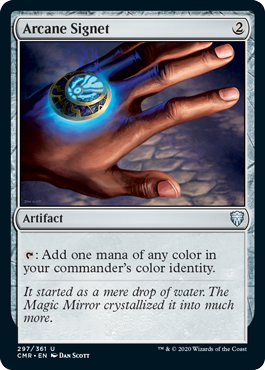
Arcane Signet is an uncommon from some commander thing.
Okay, so, why does this exist? This goes beyond me just despising commander as a format, even within that format, doesn't this just invalidate every other 2-mana mana rock? It makes coloured mana, but only the kinds that you would ever need? How is that a drawback? This thing makes whatever colour you fucking need in the only format it can make coloured mana at all. I understand that it's a 99-card, 1-of format, but this thing is basically an auto-include, right? Isn't the whole point of commander to not HAVE auto-includes?
I'll never understand this goddamn format.
9 notes
·
View notes